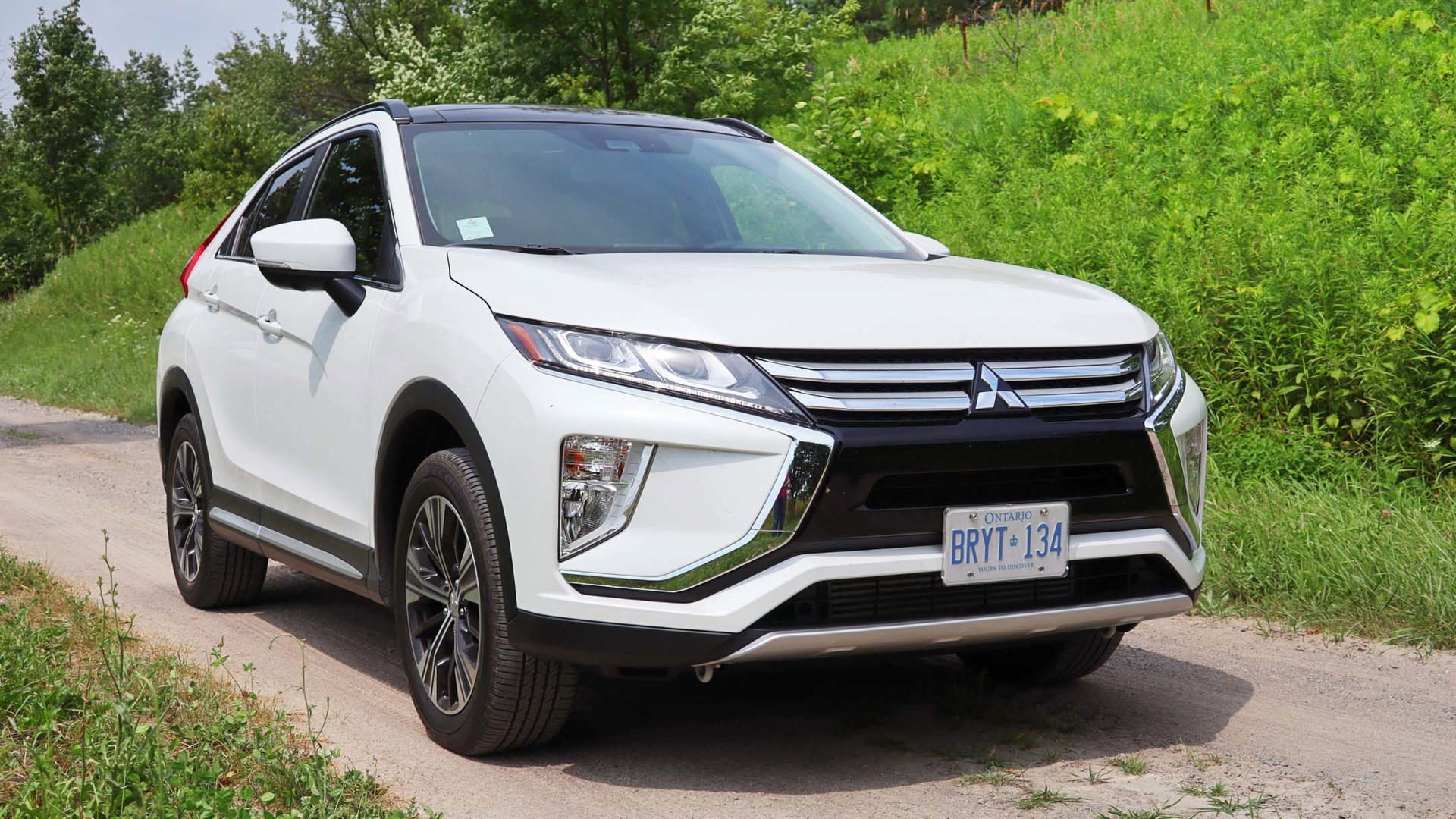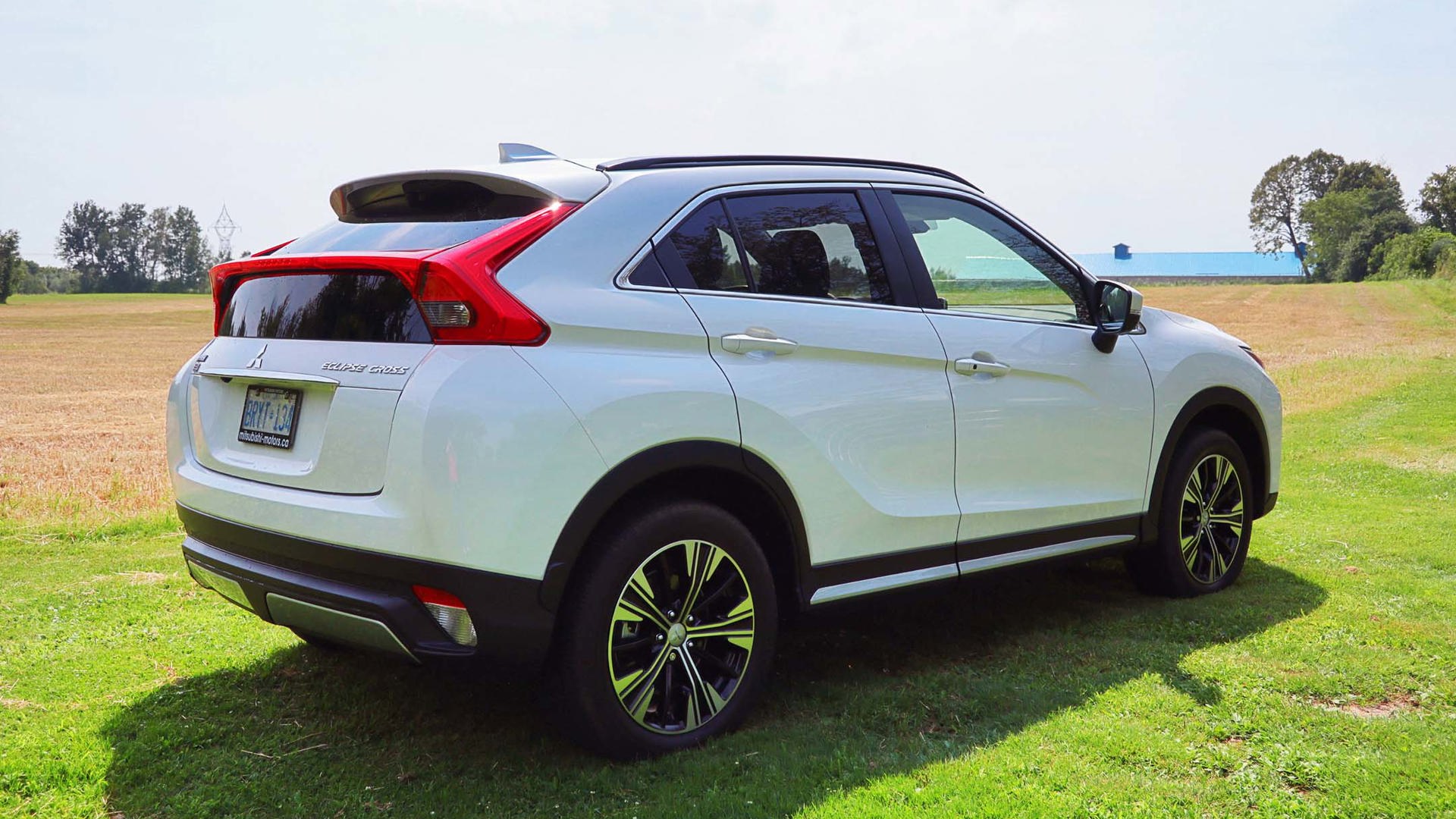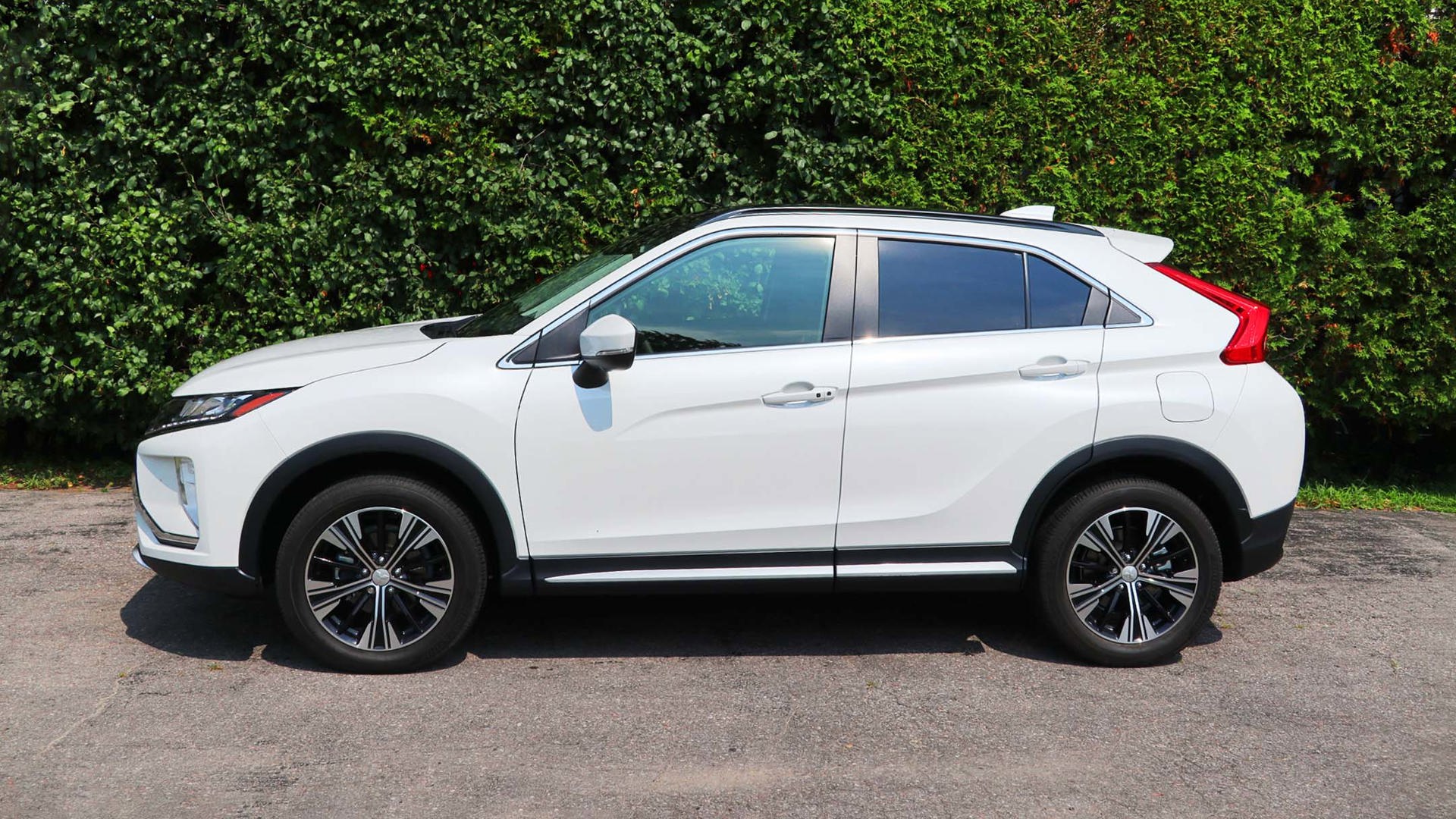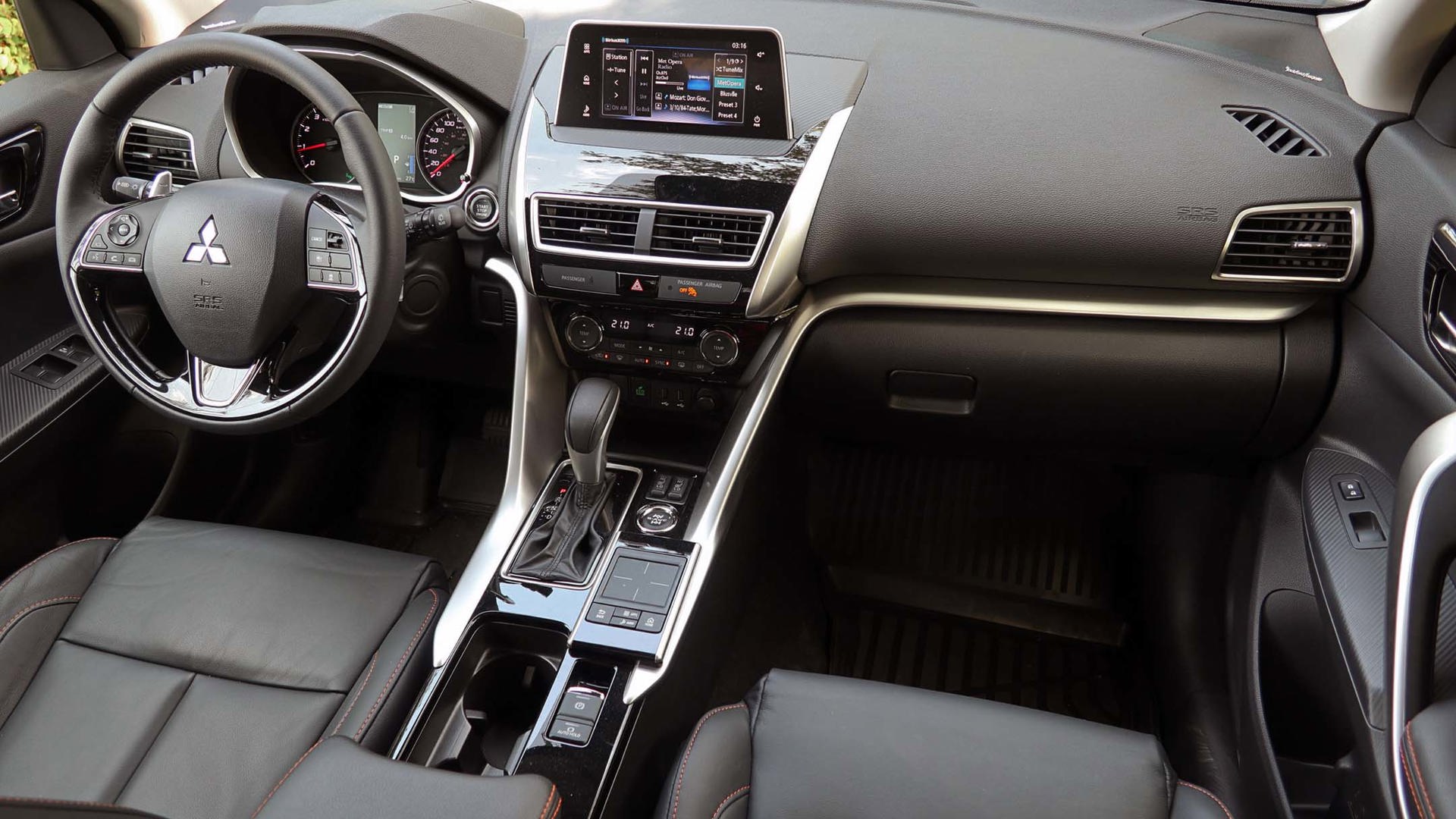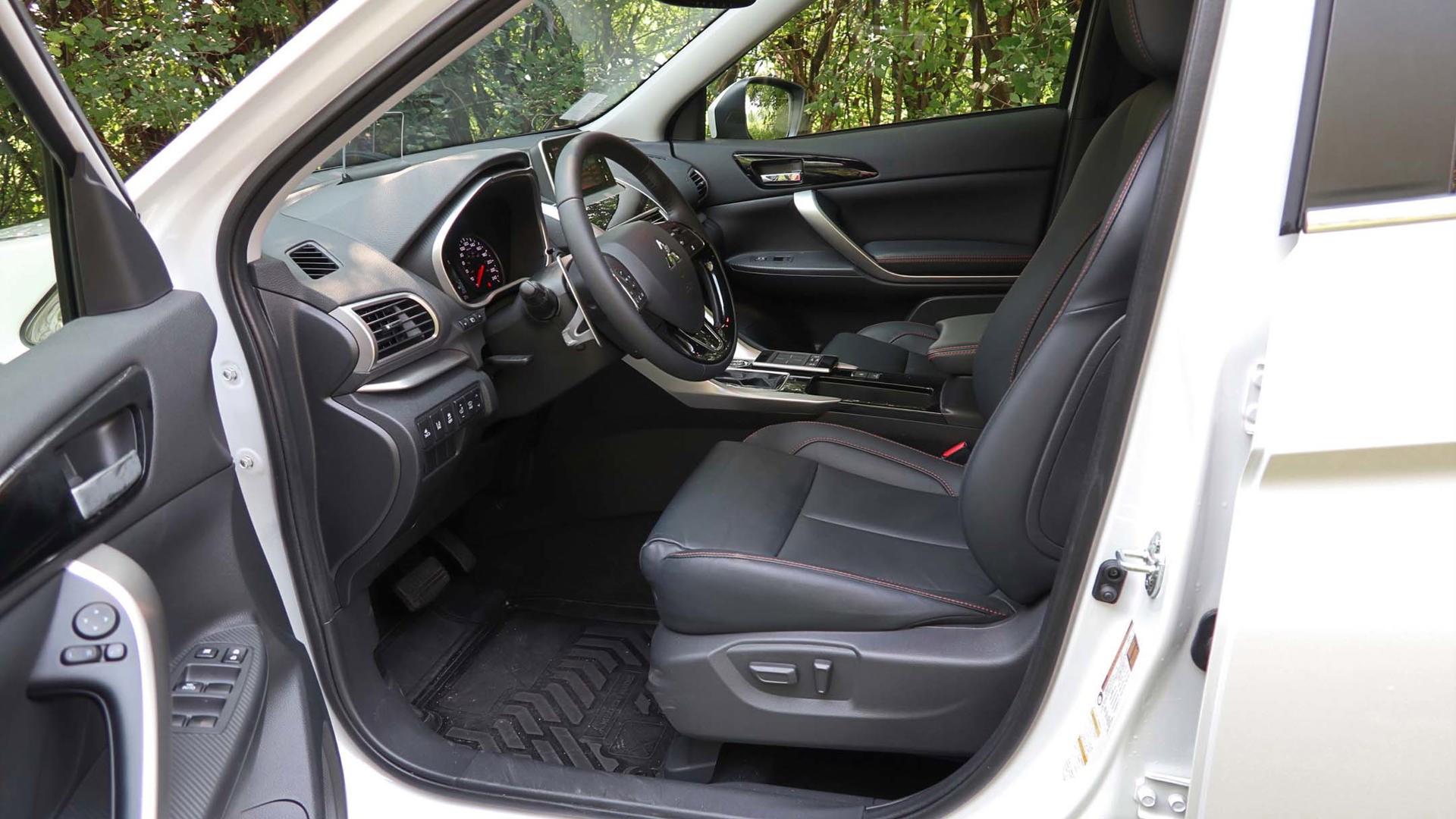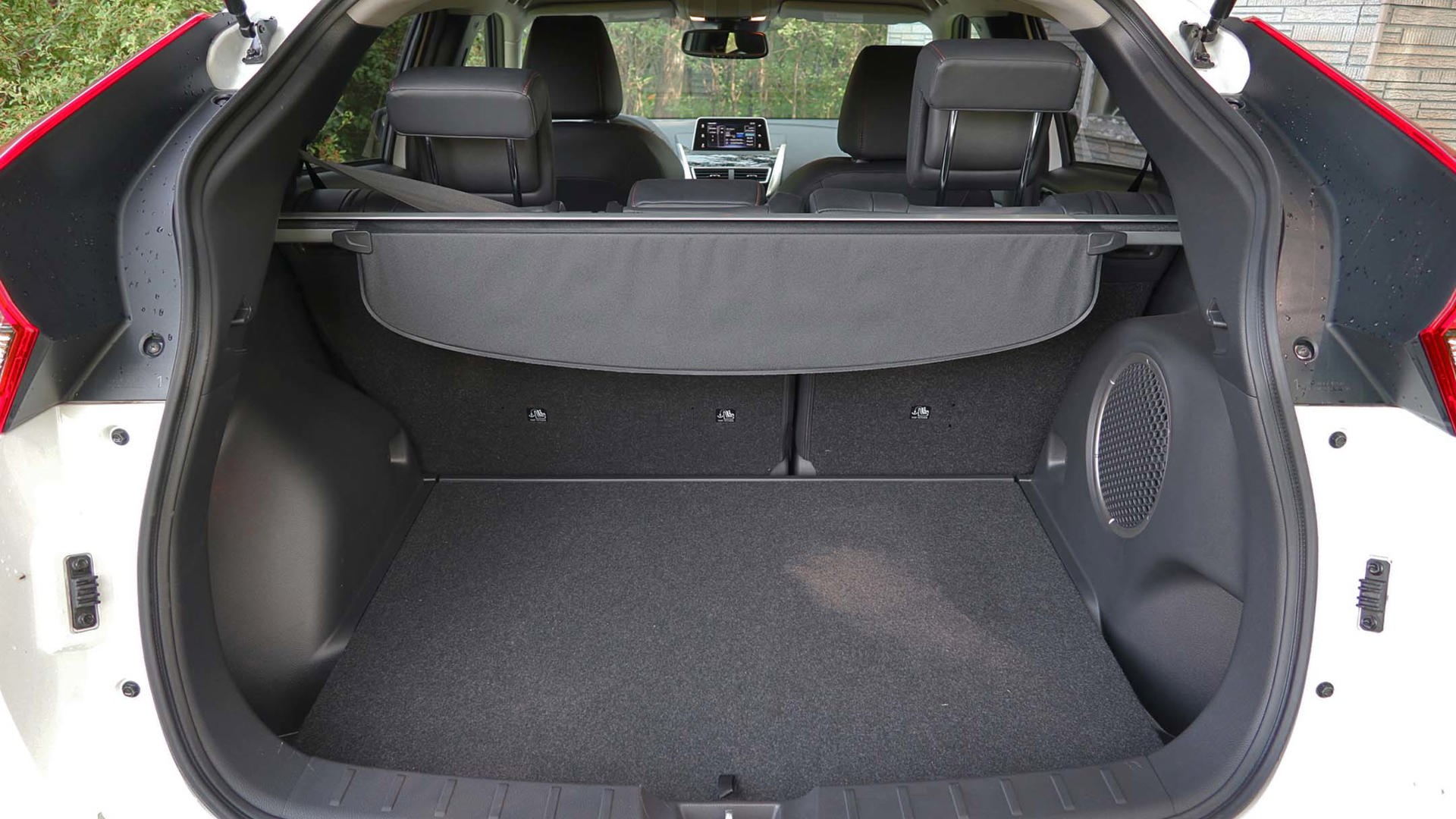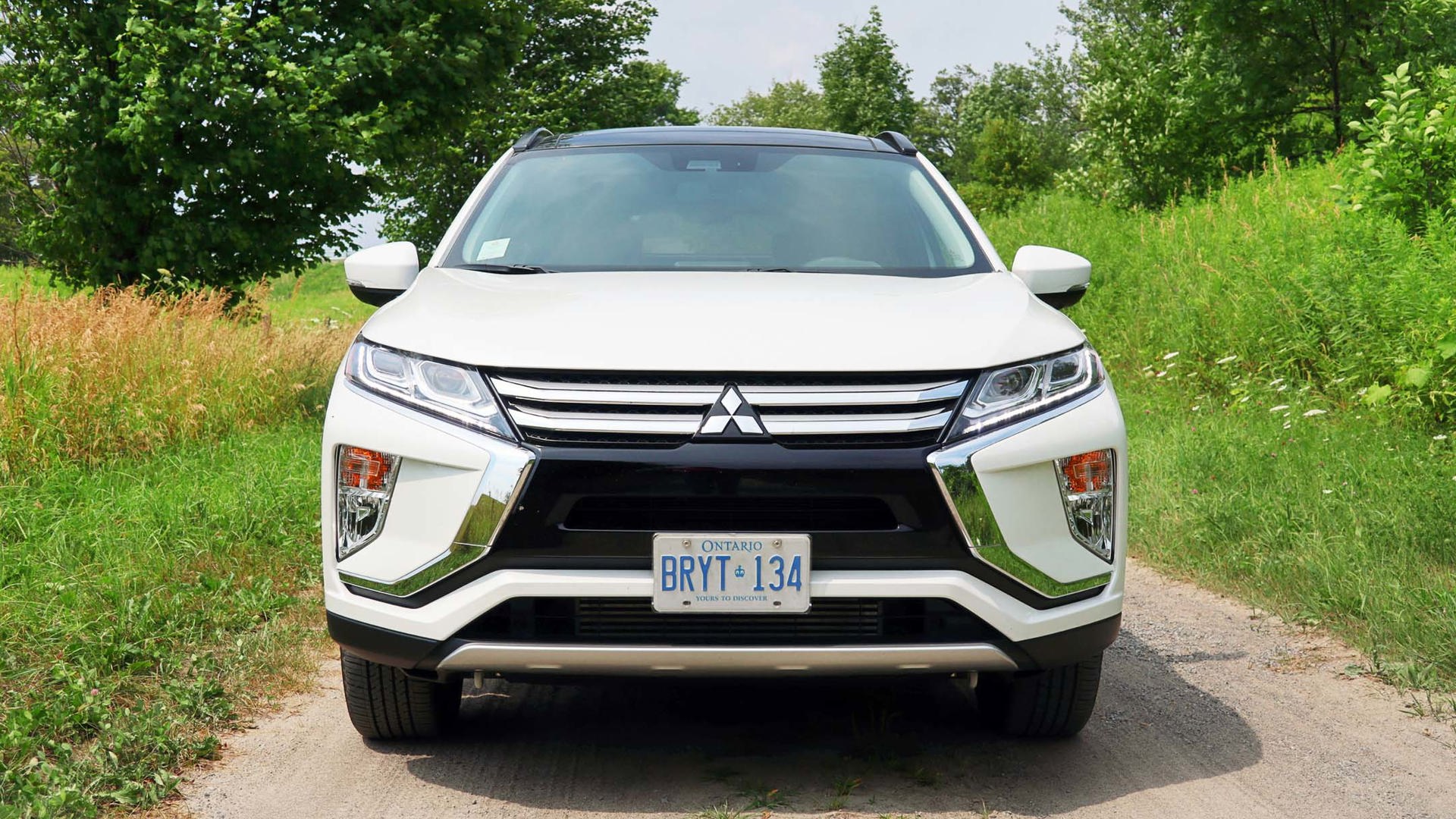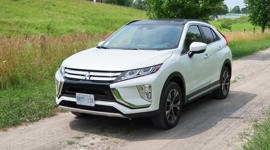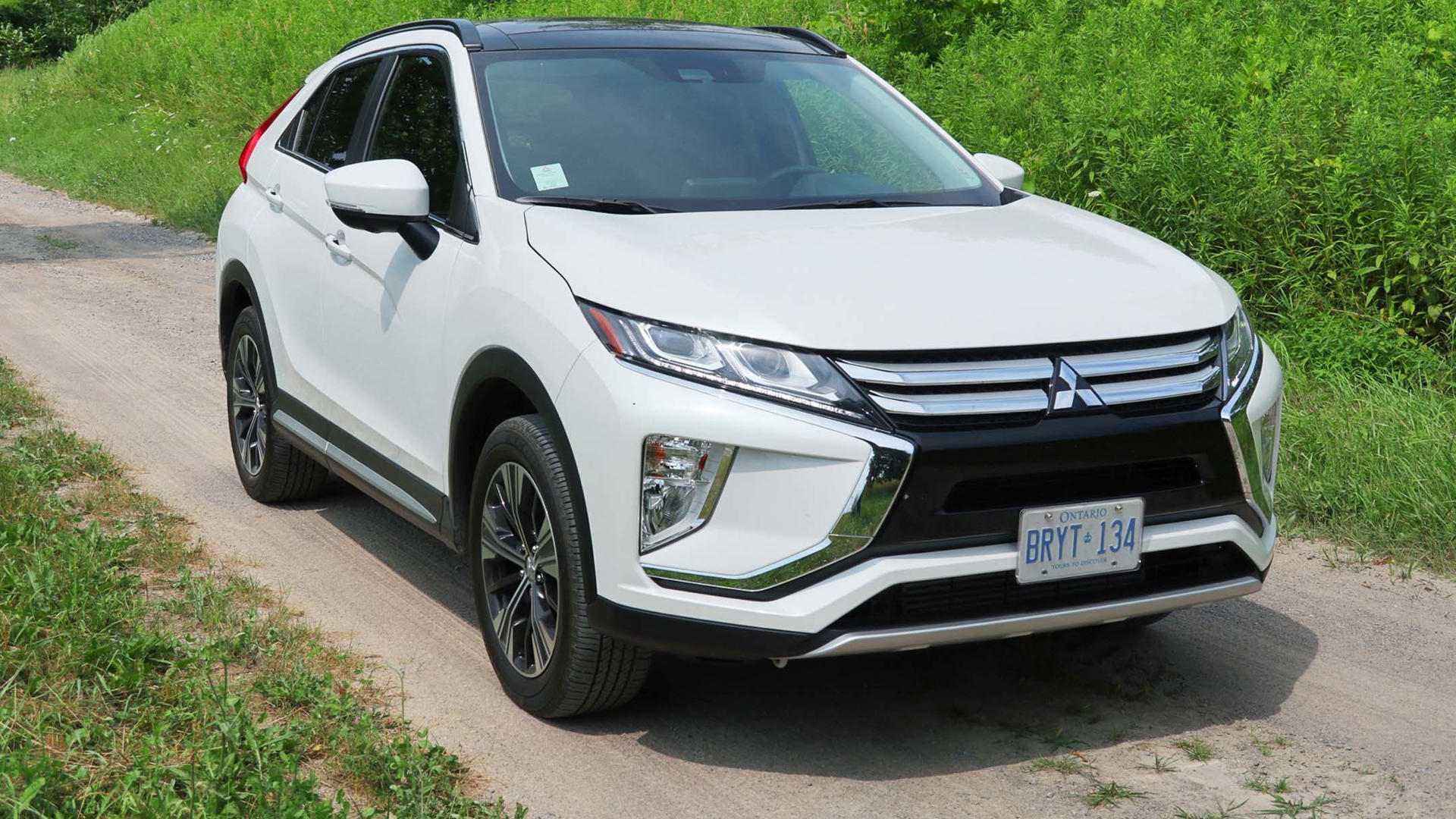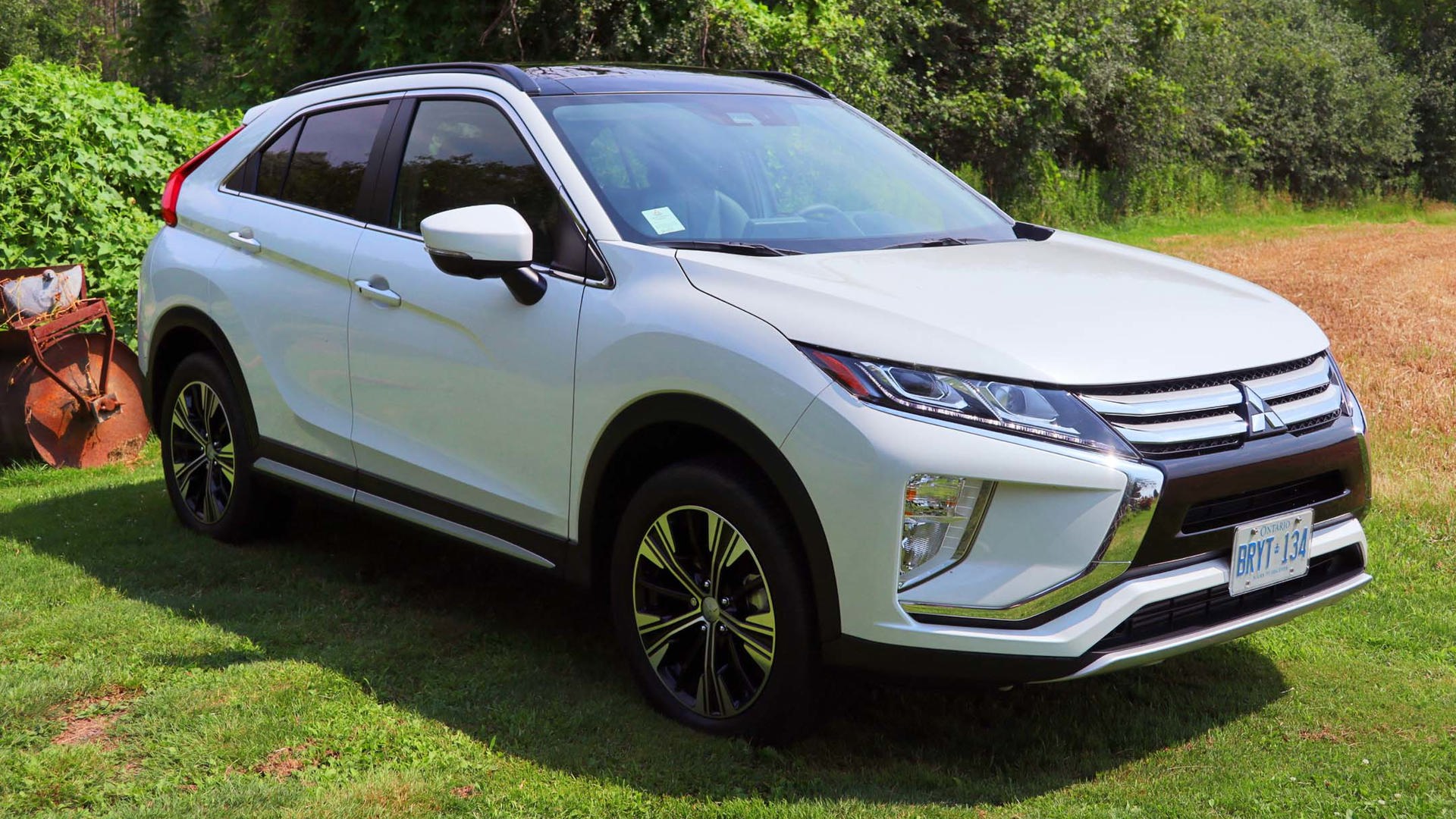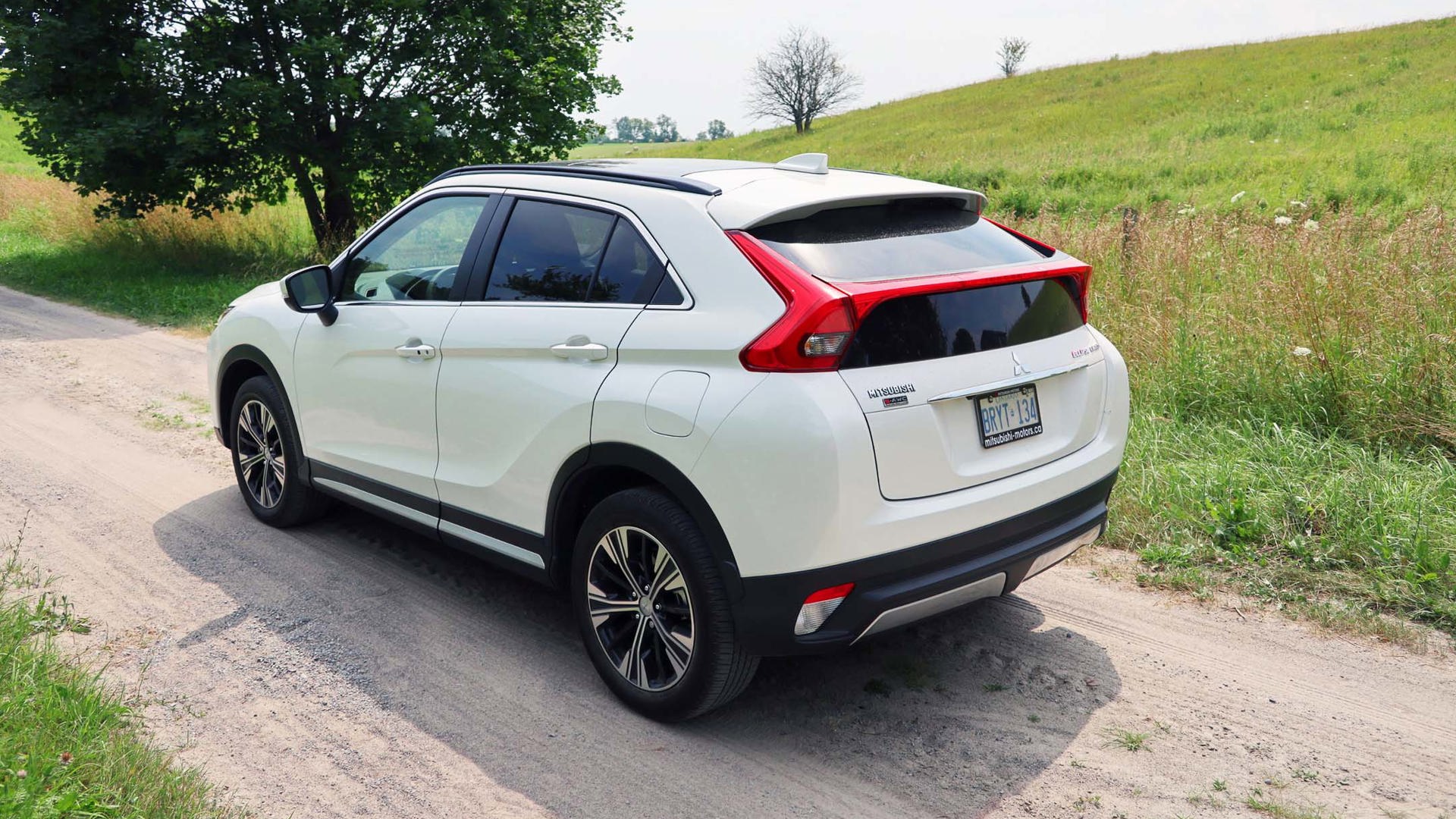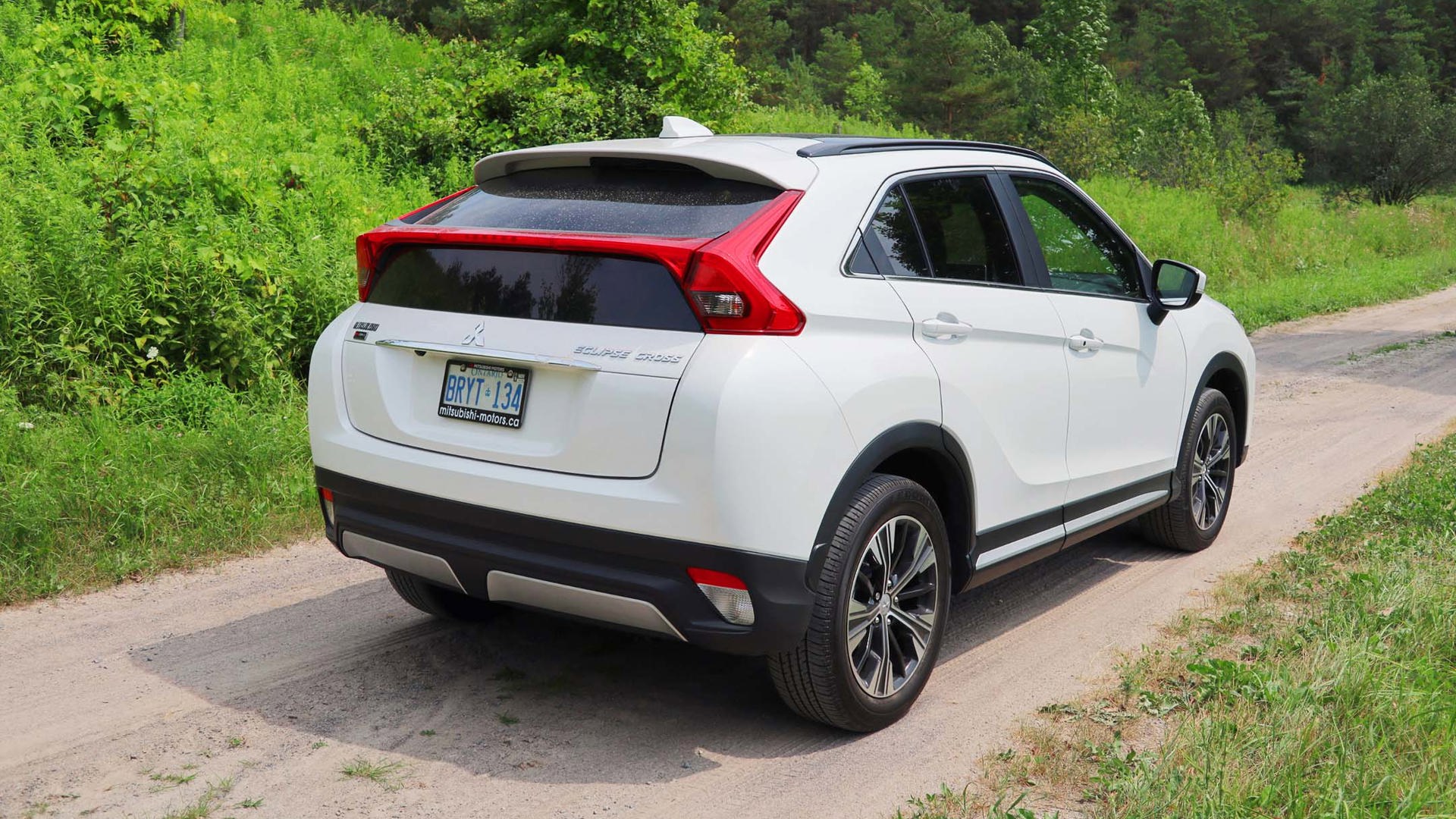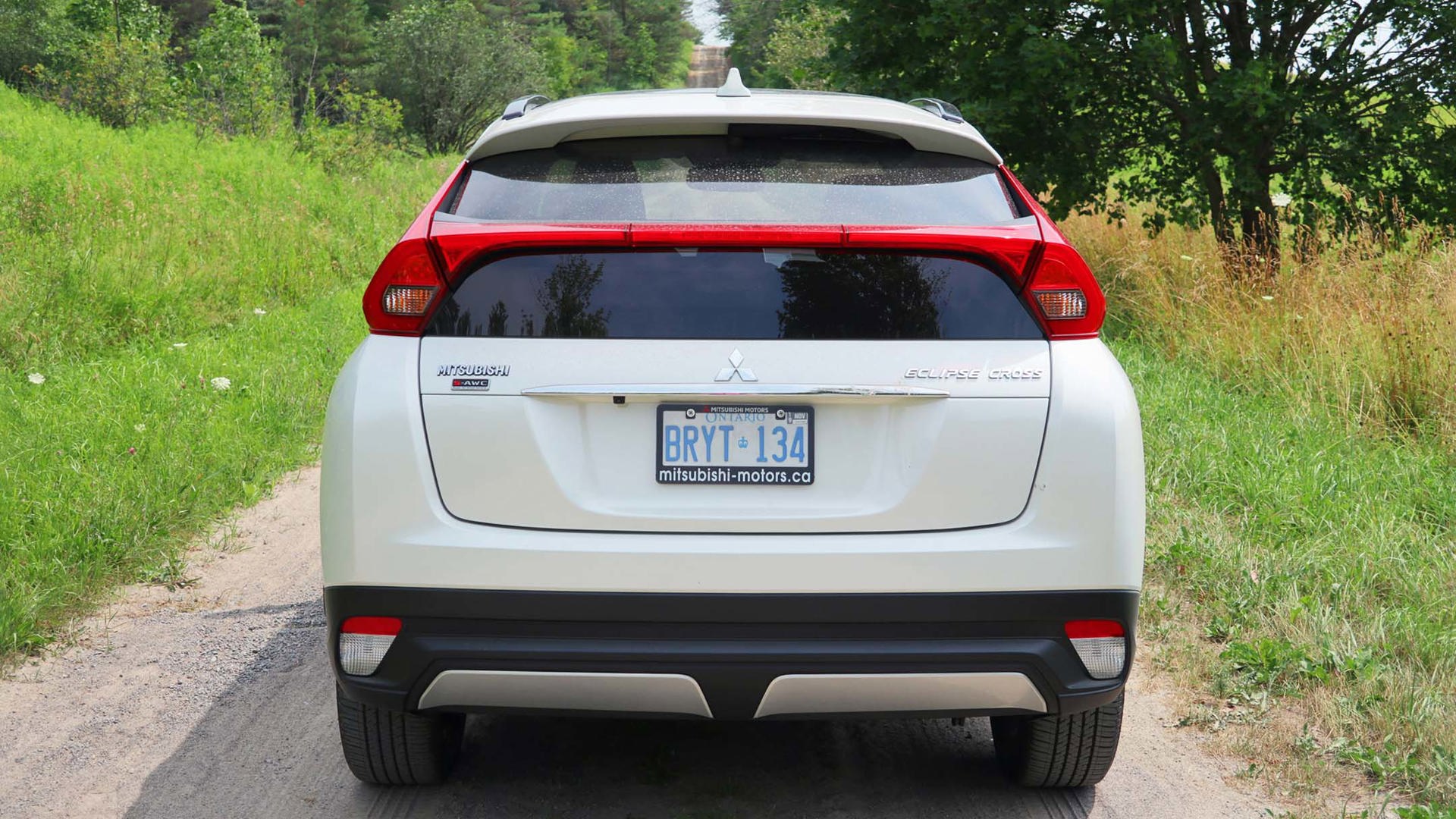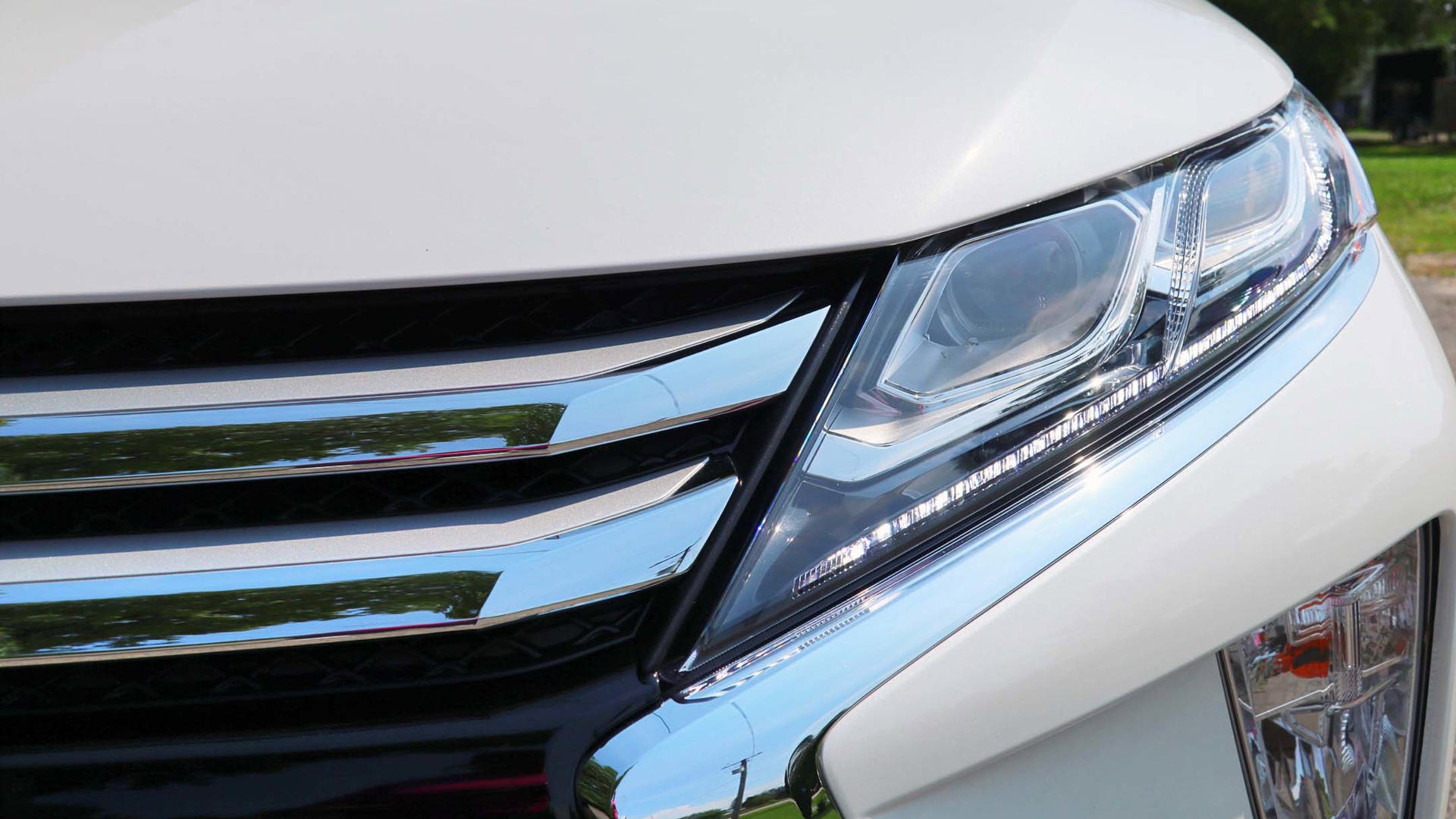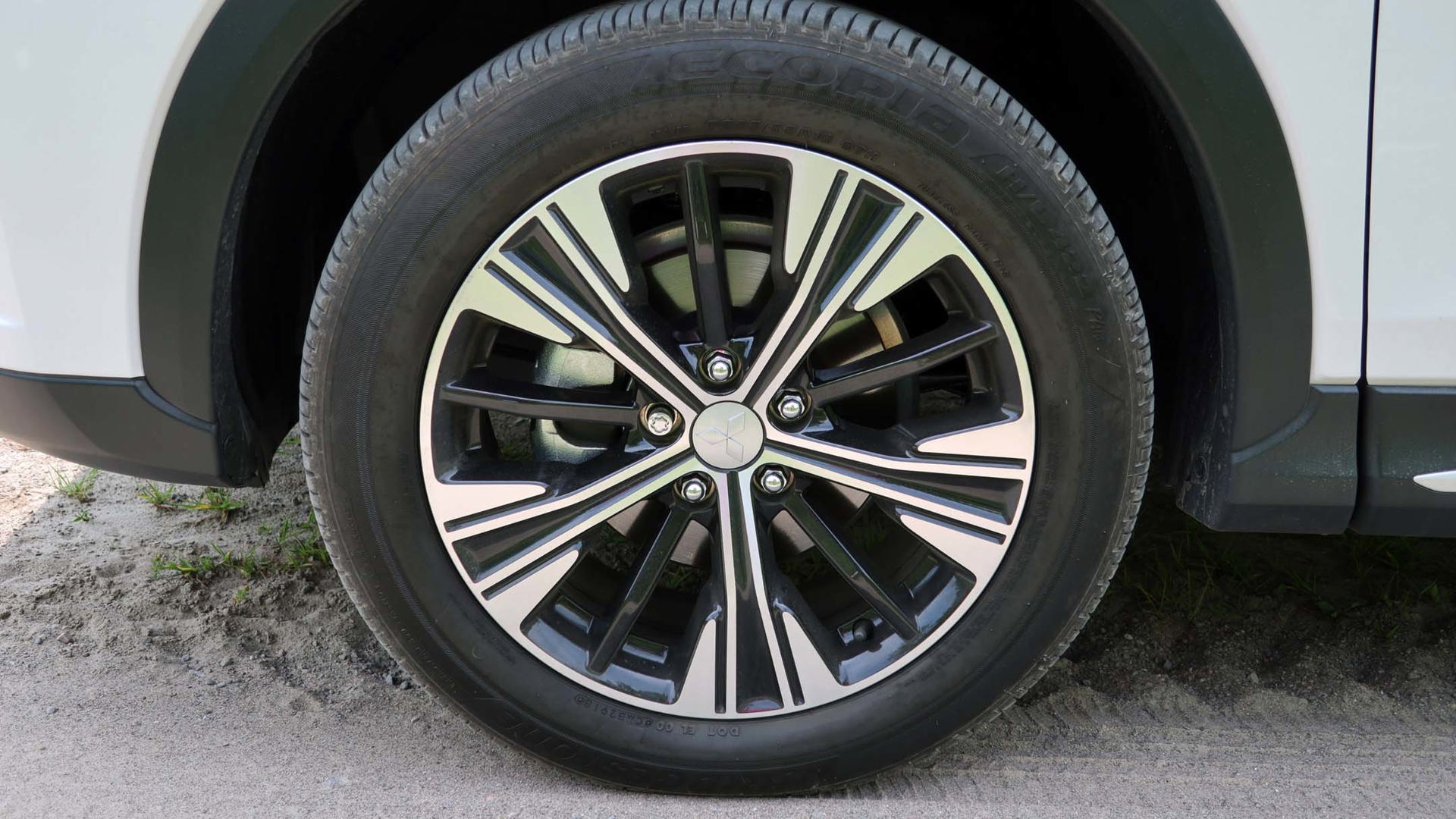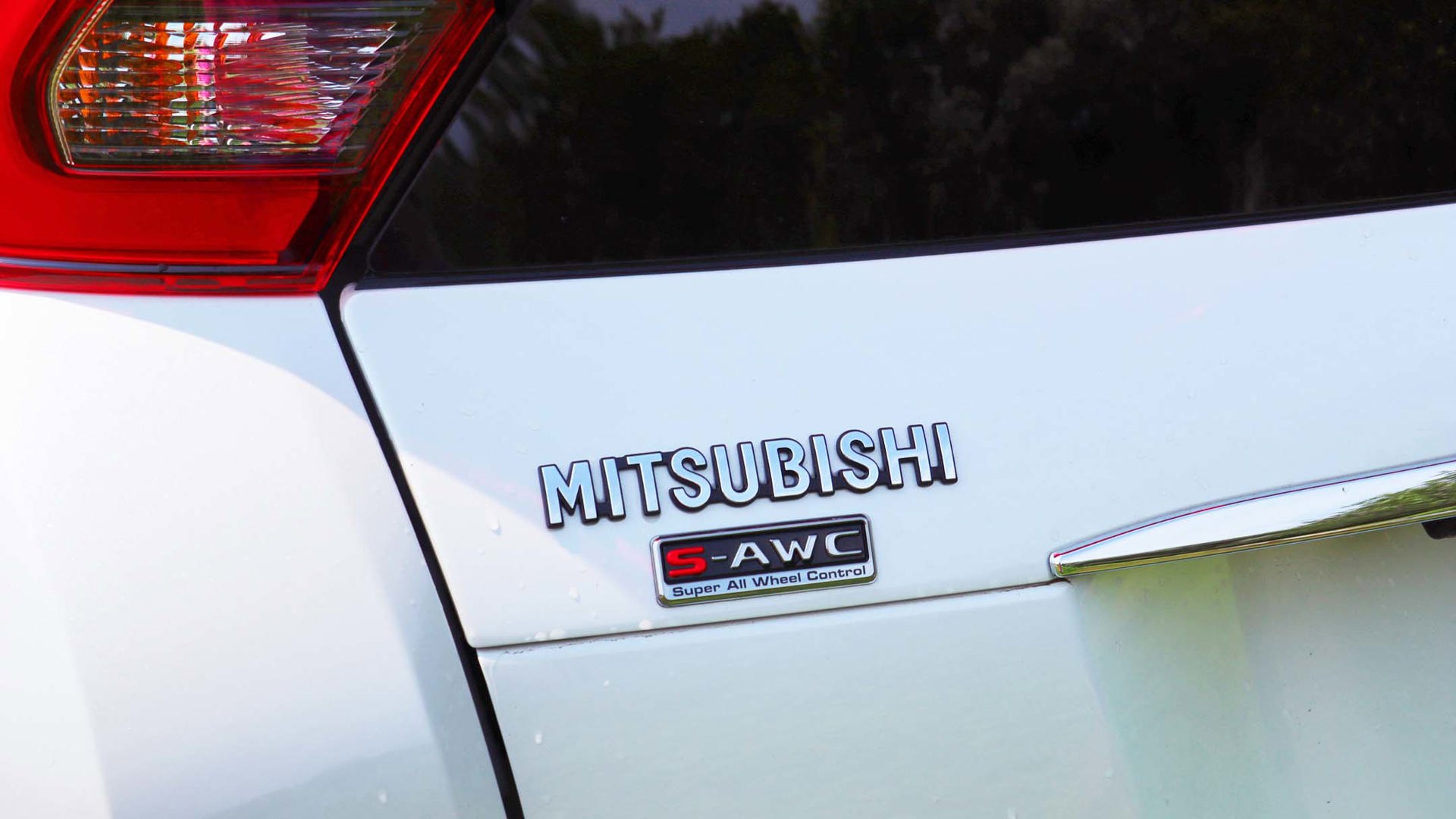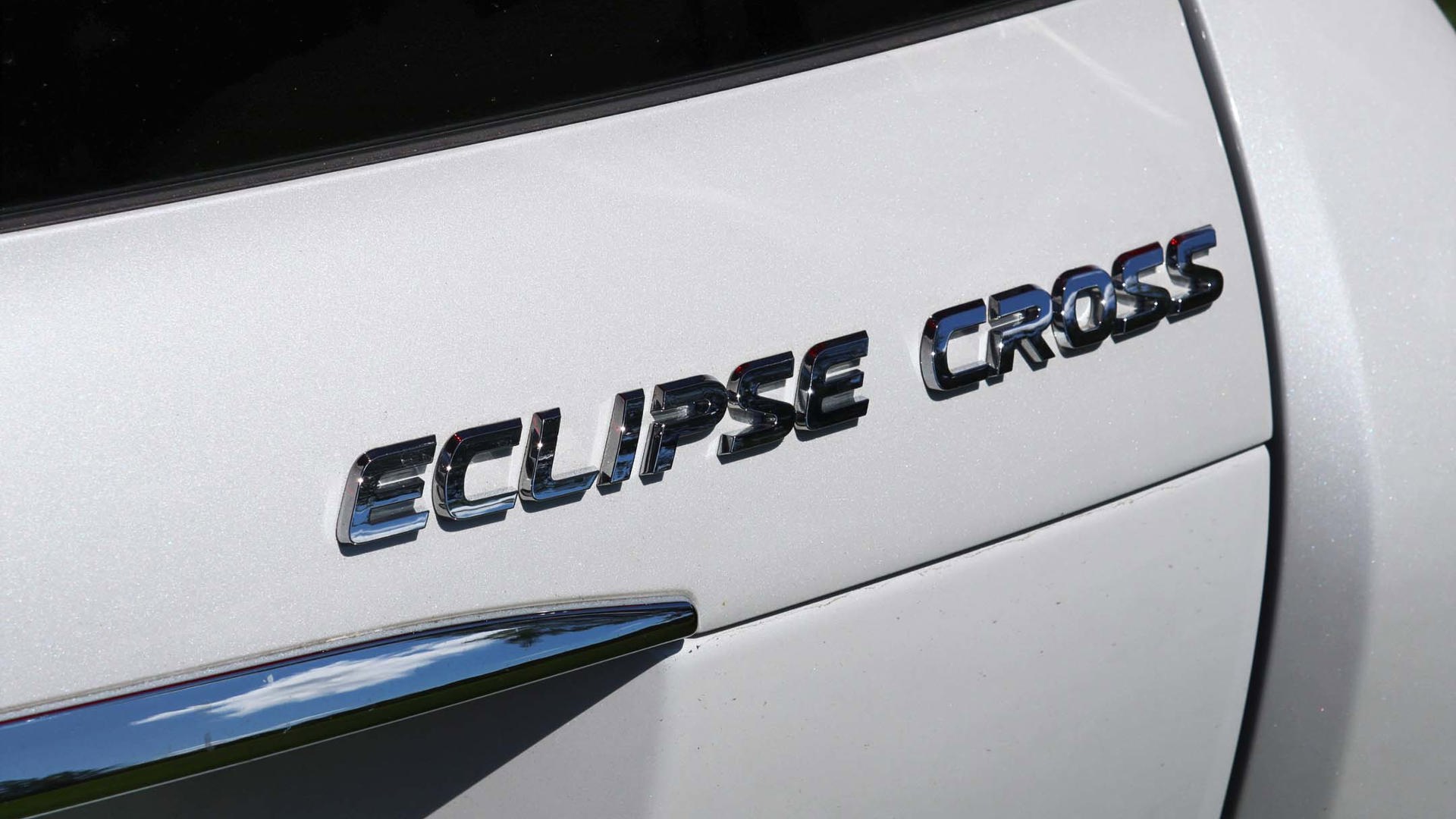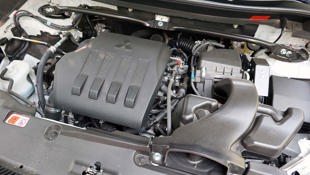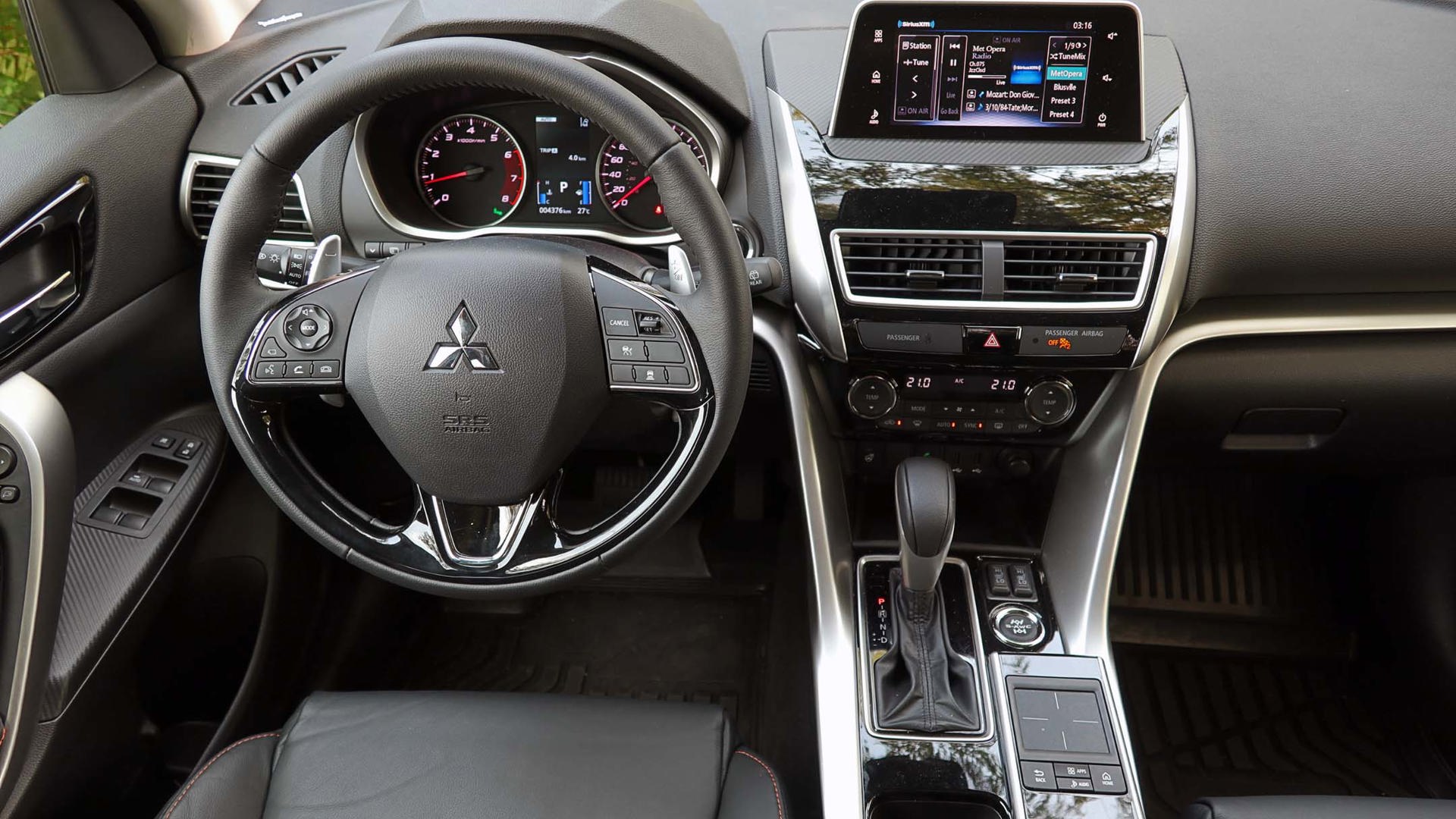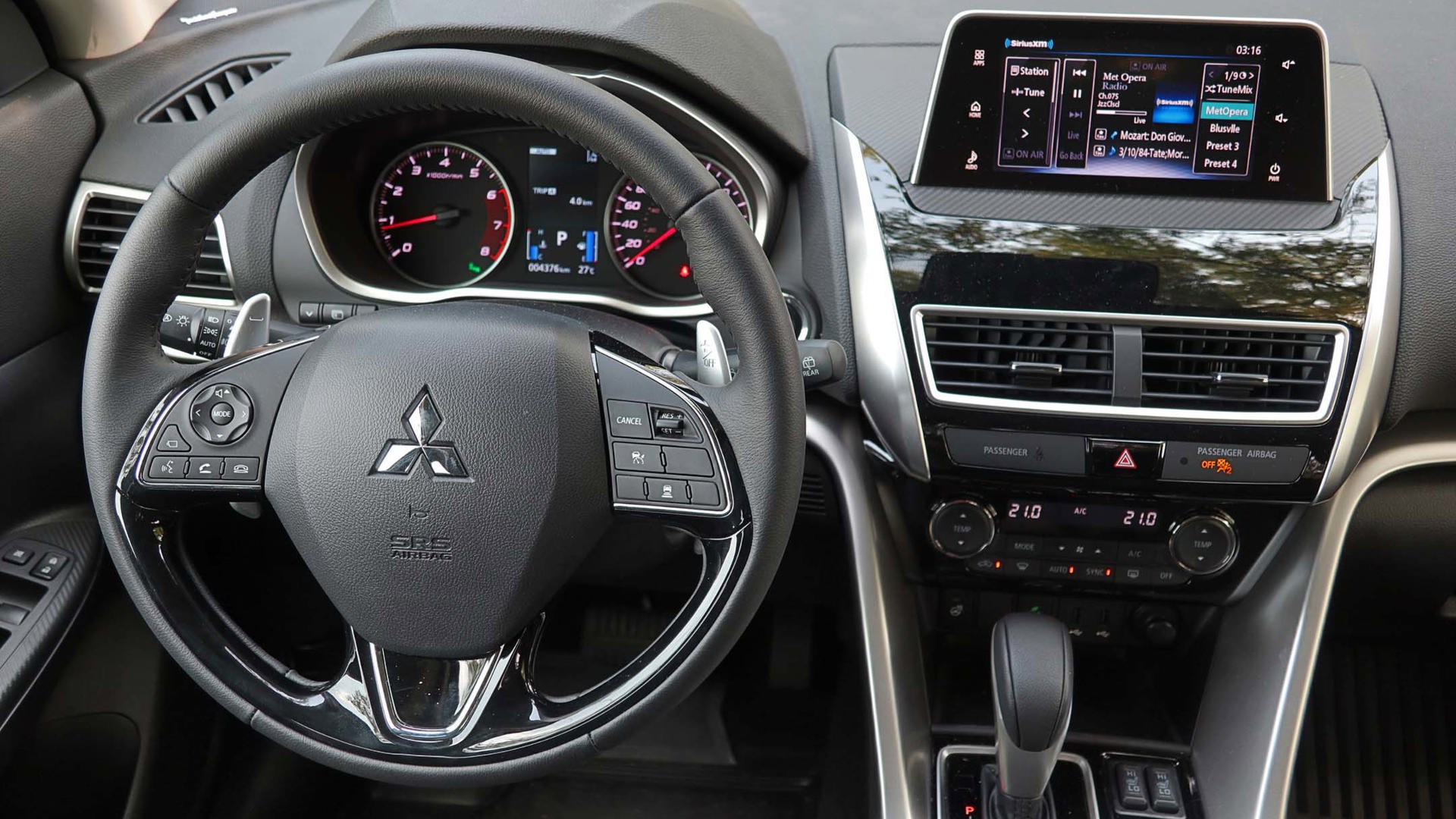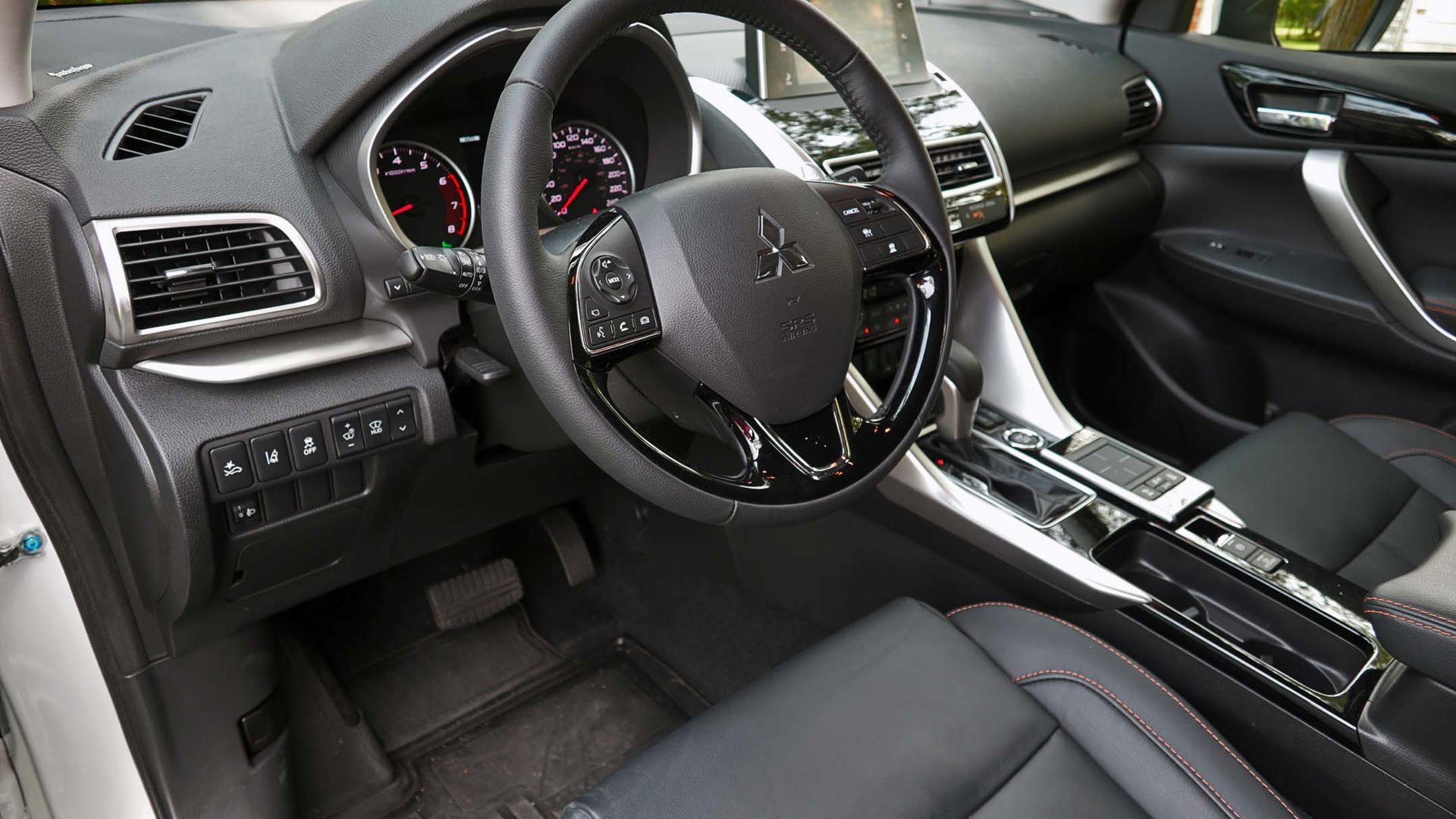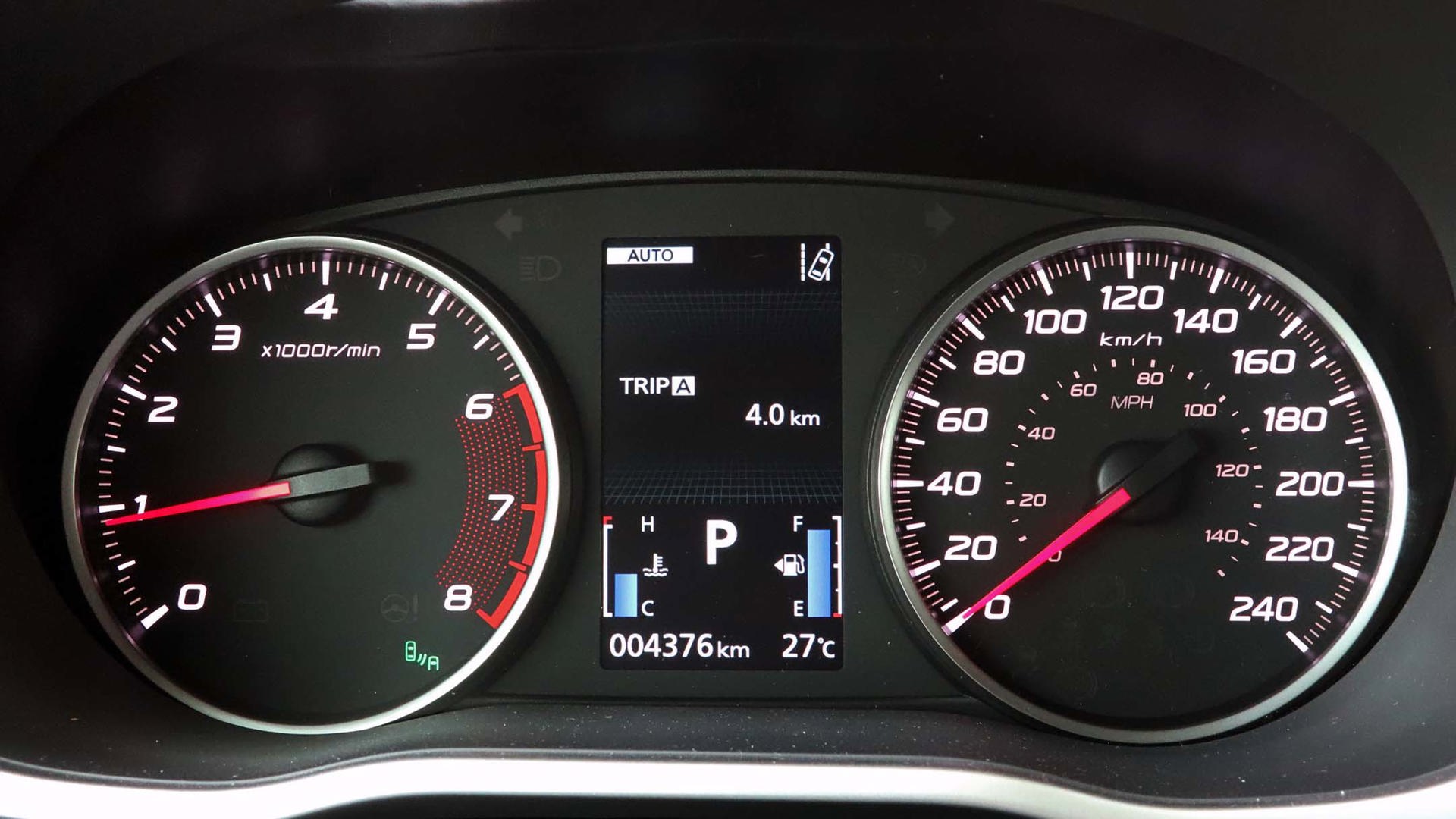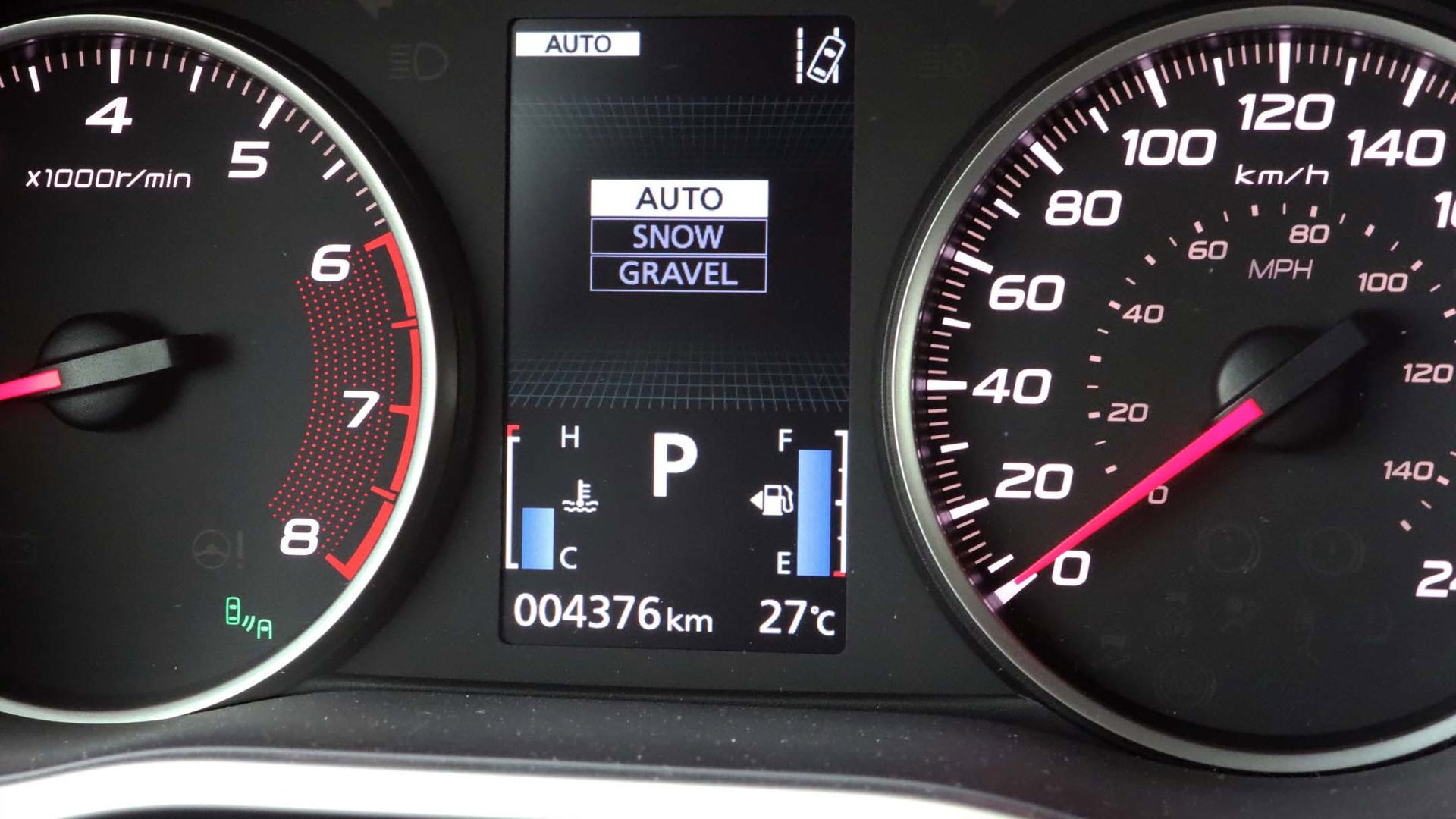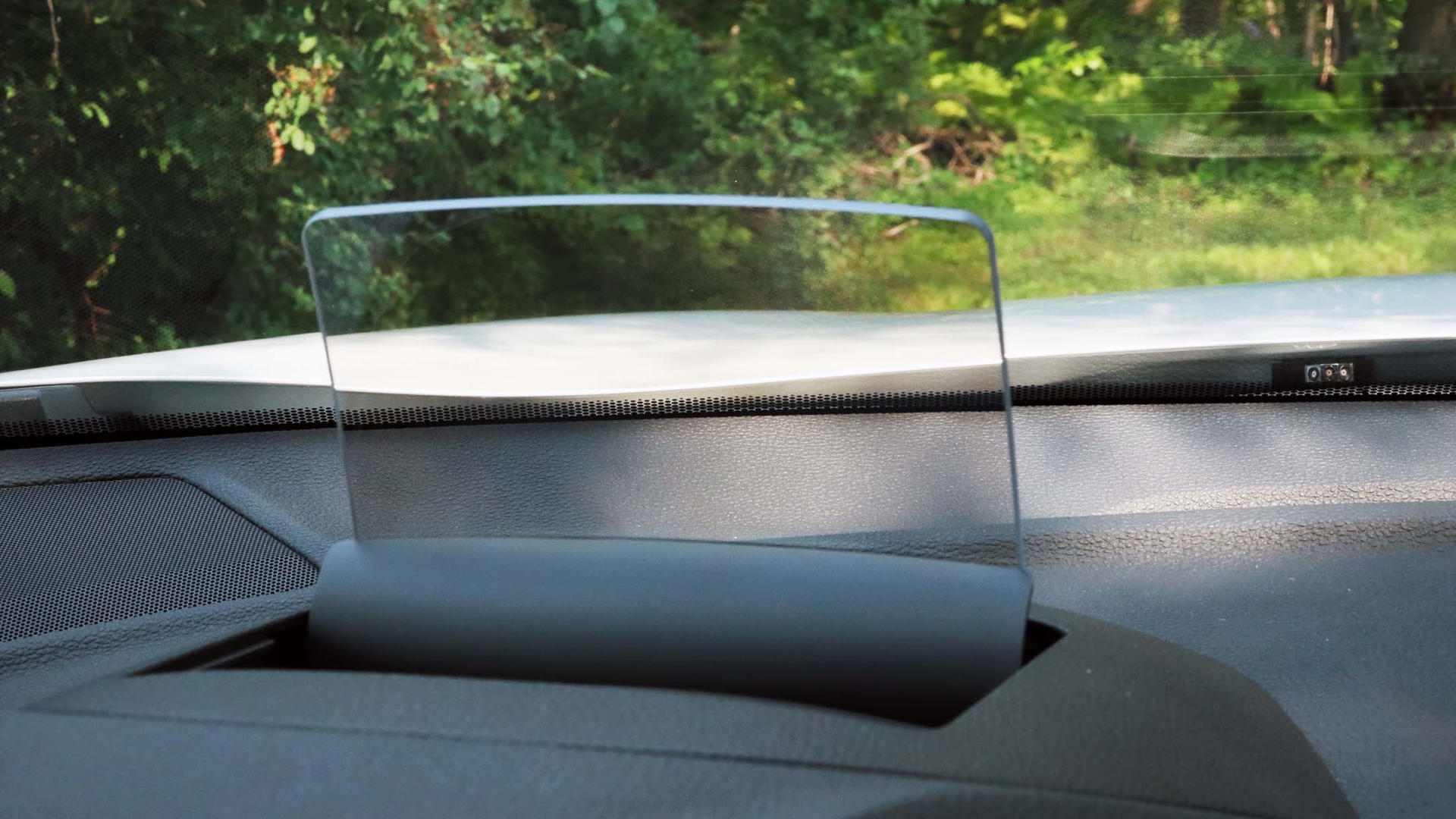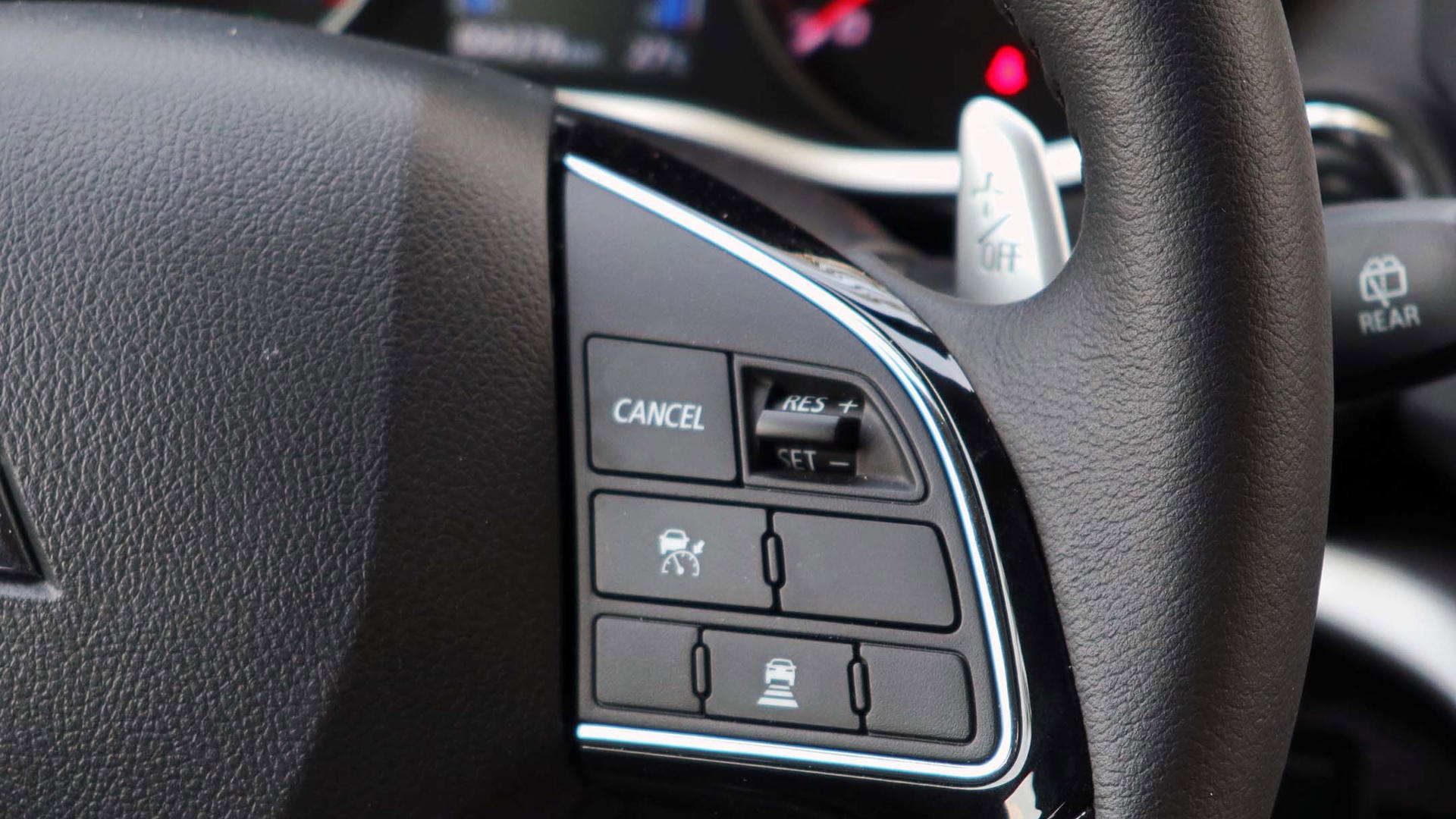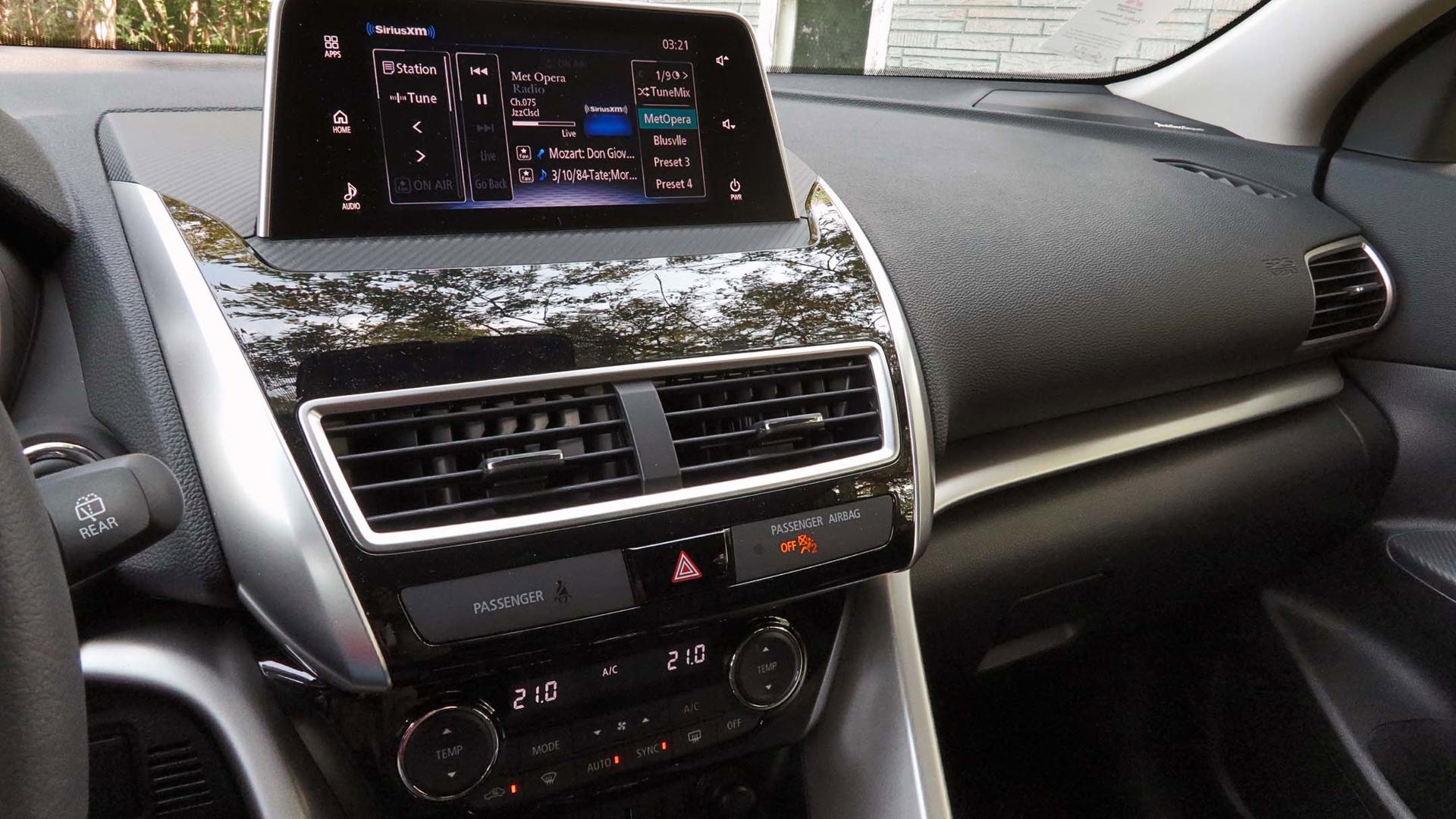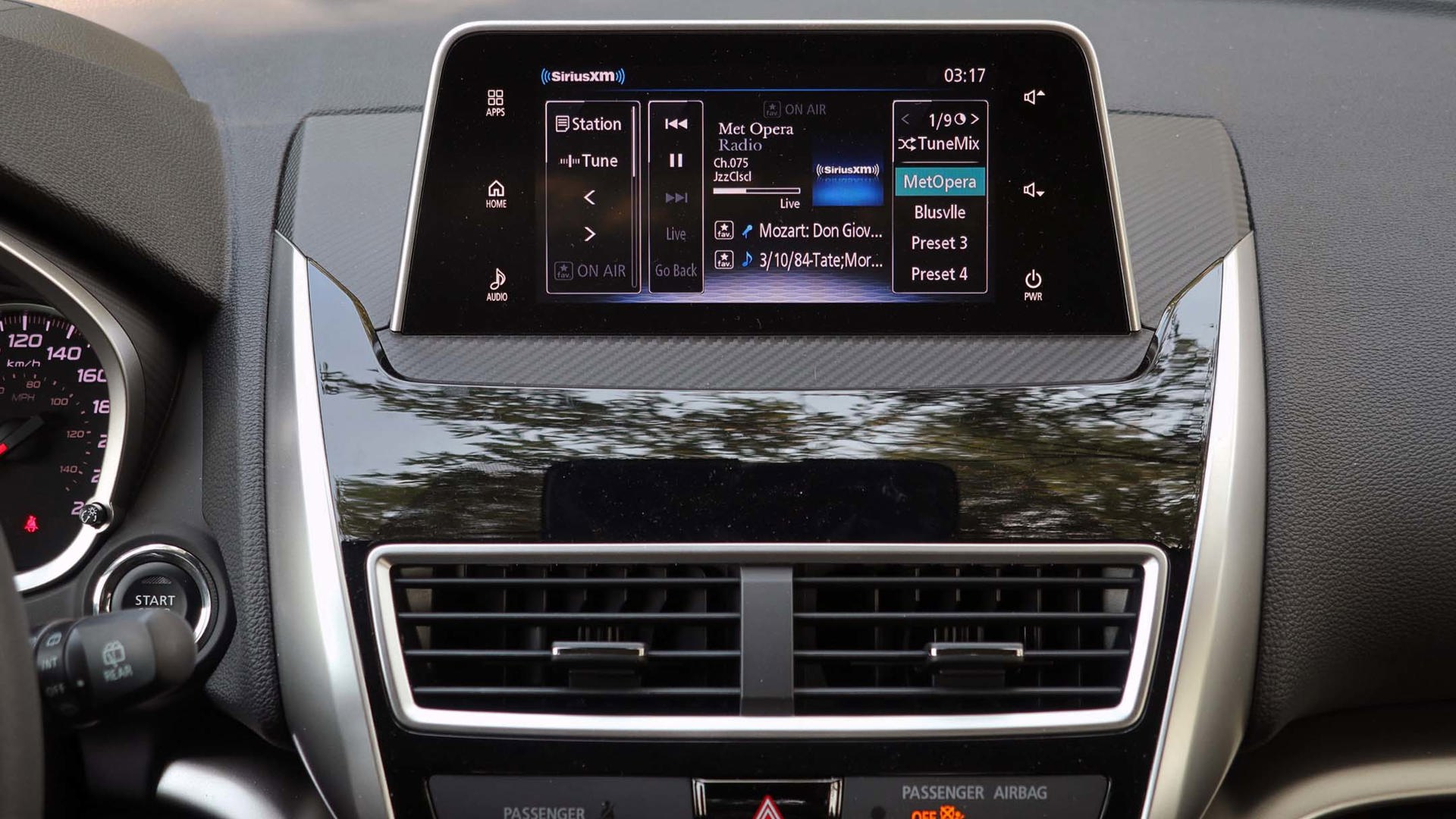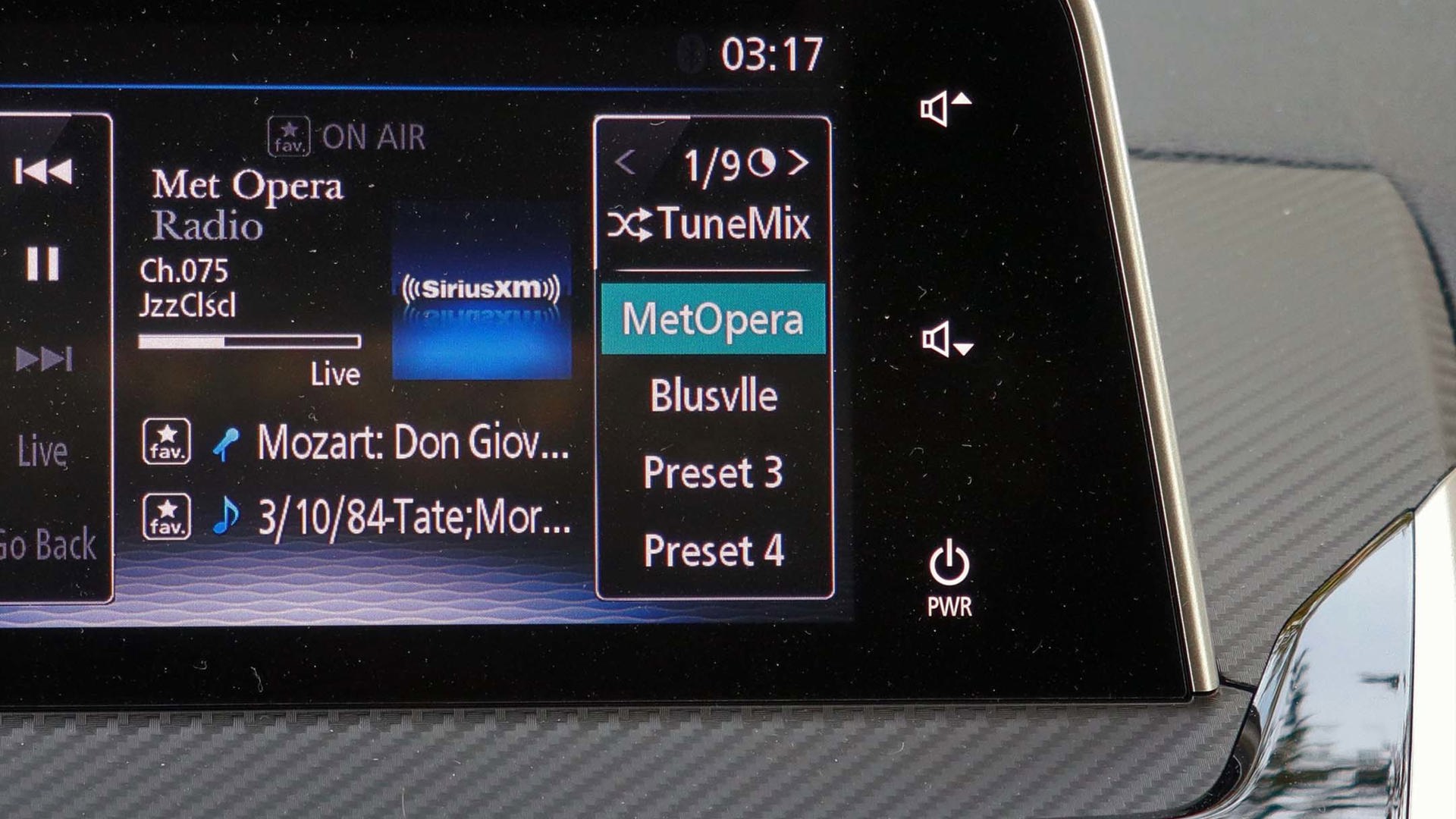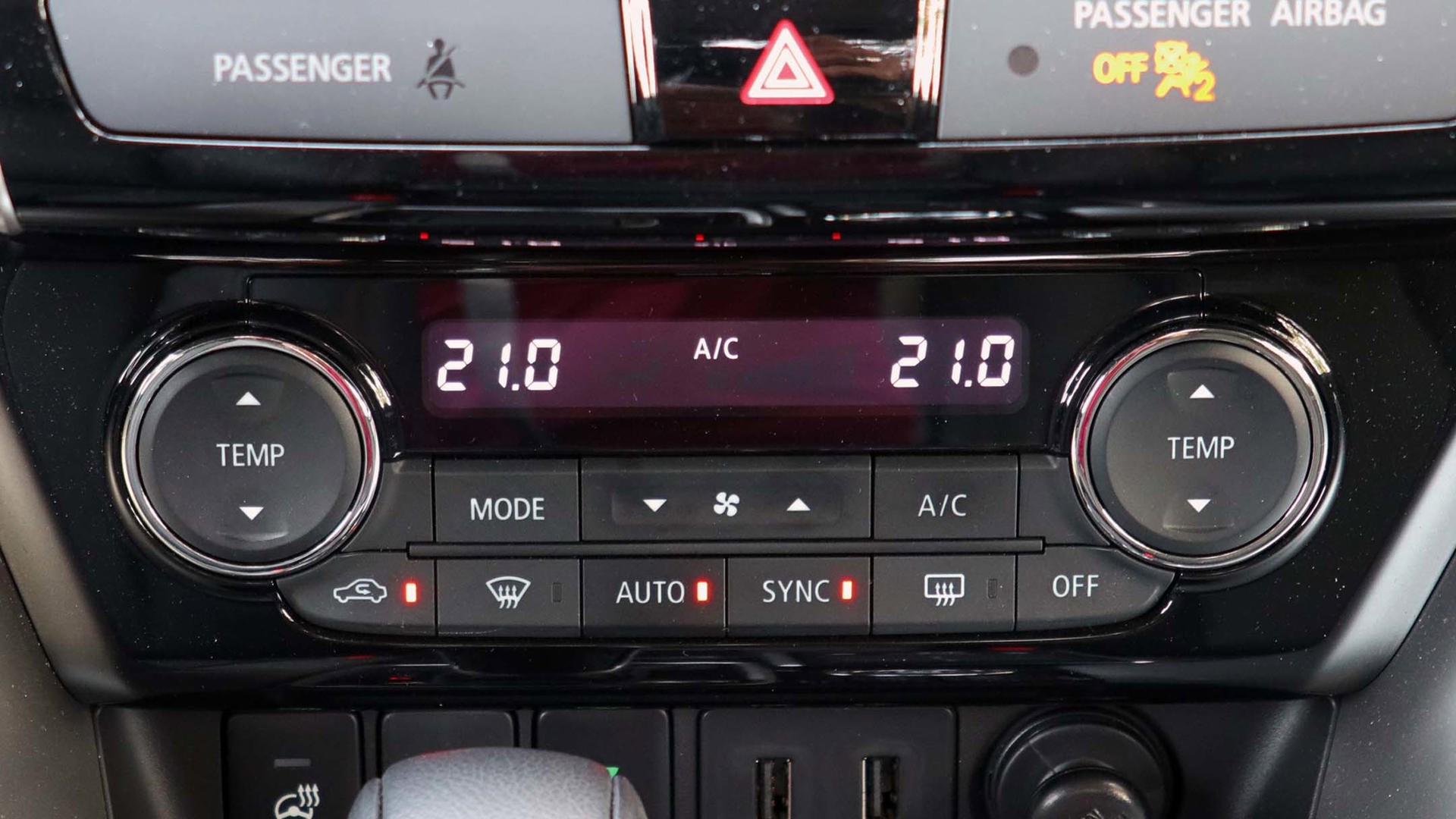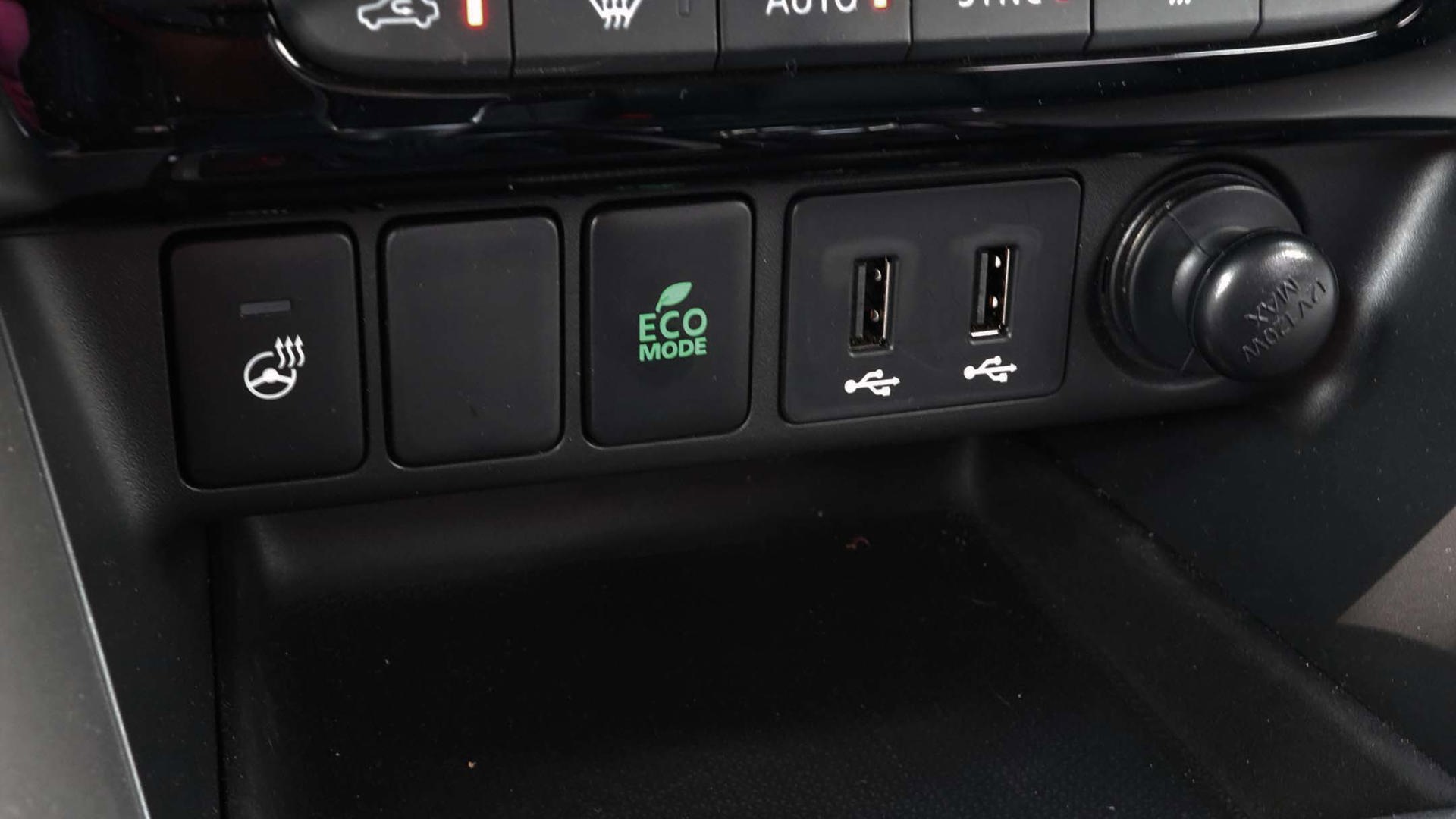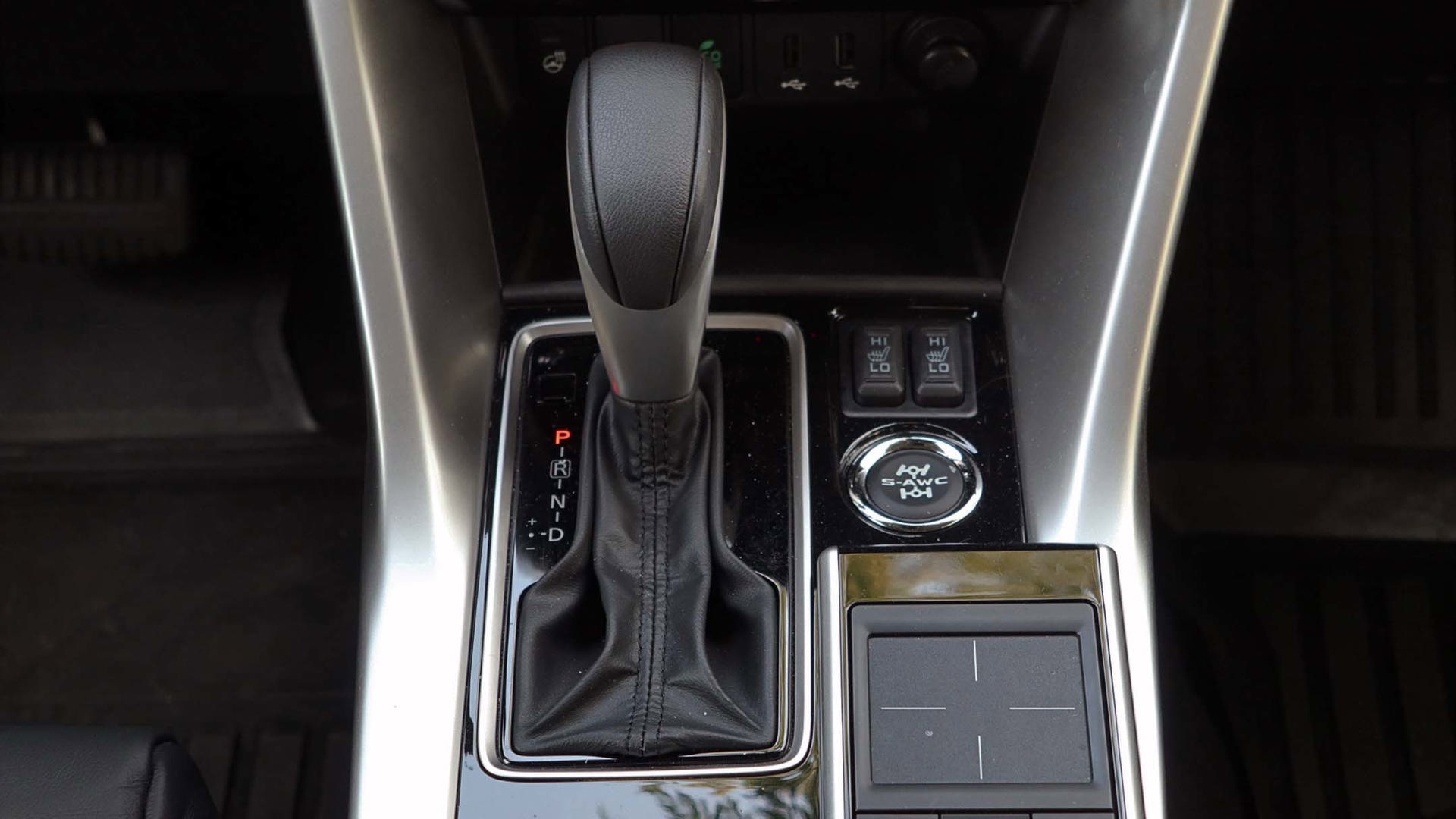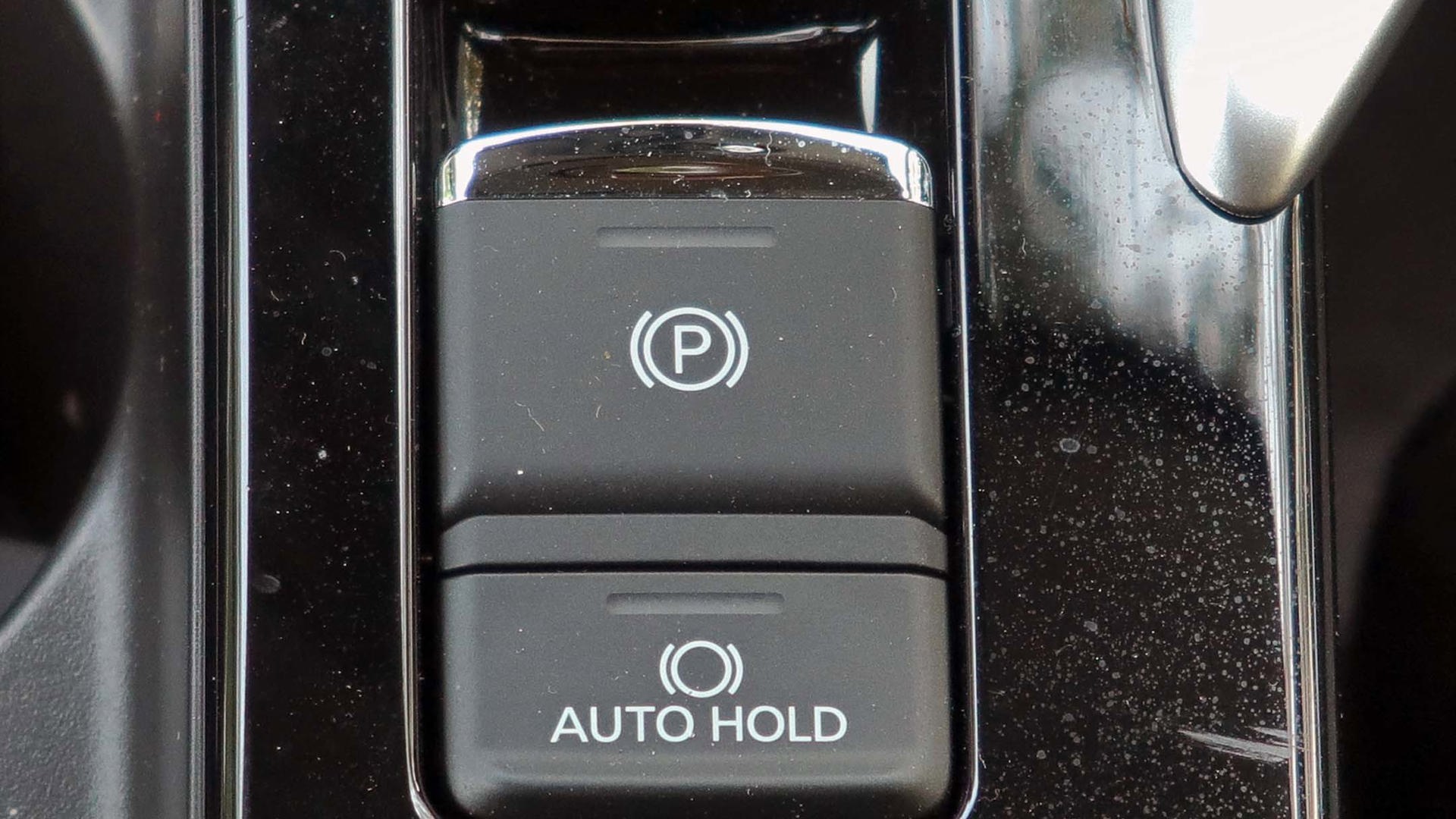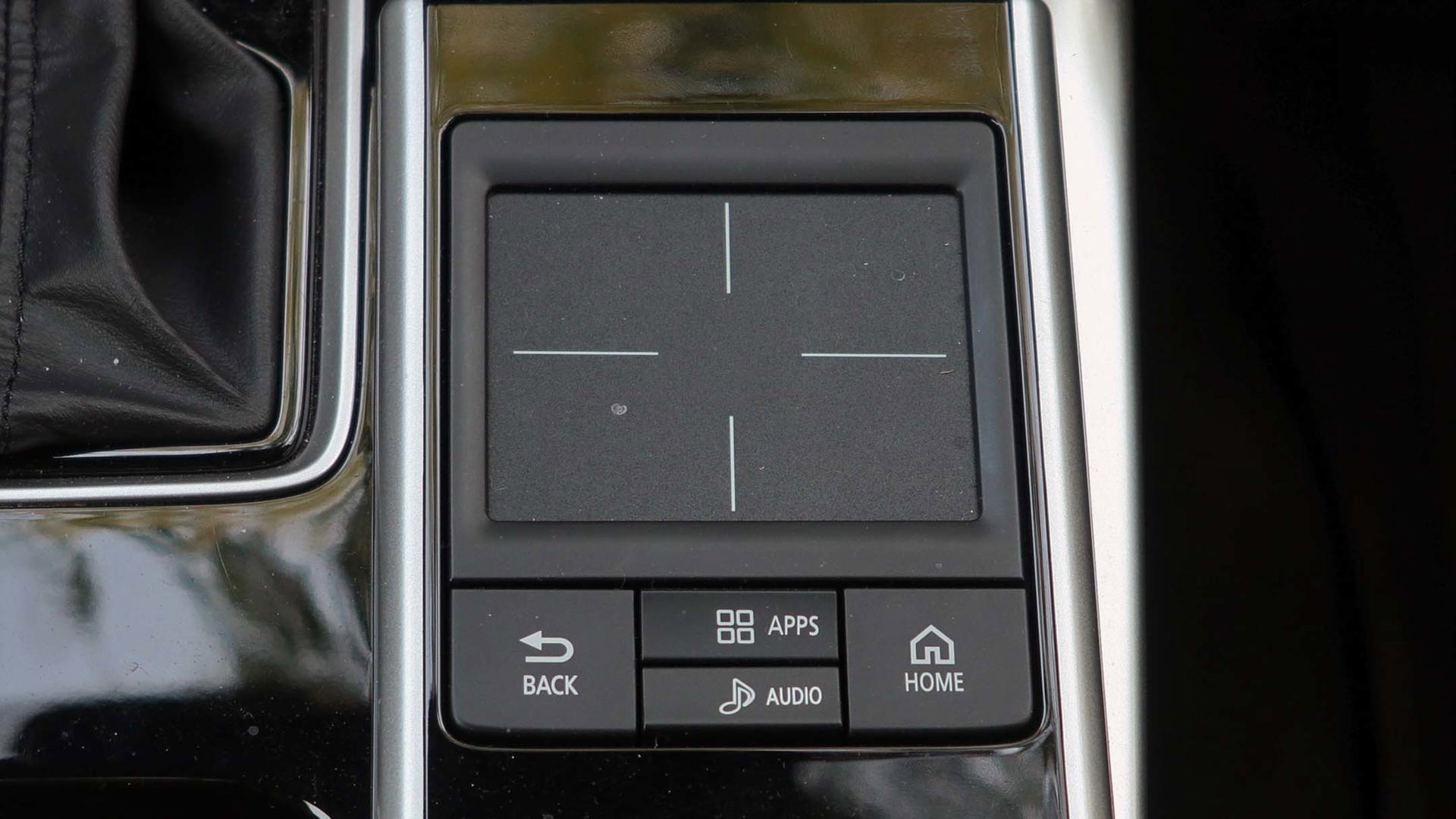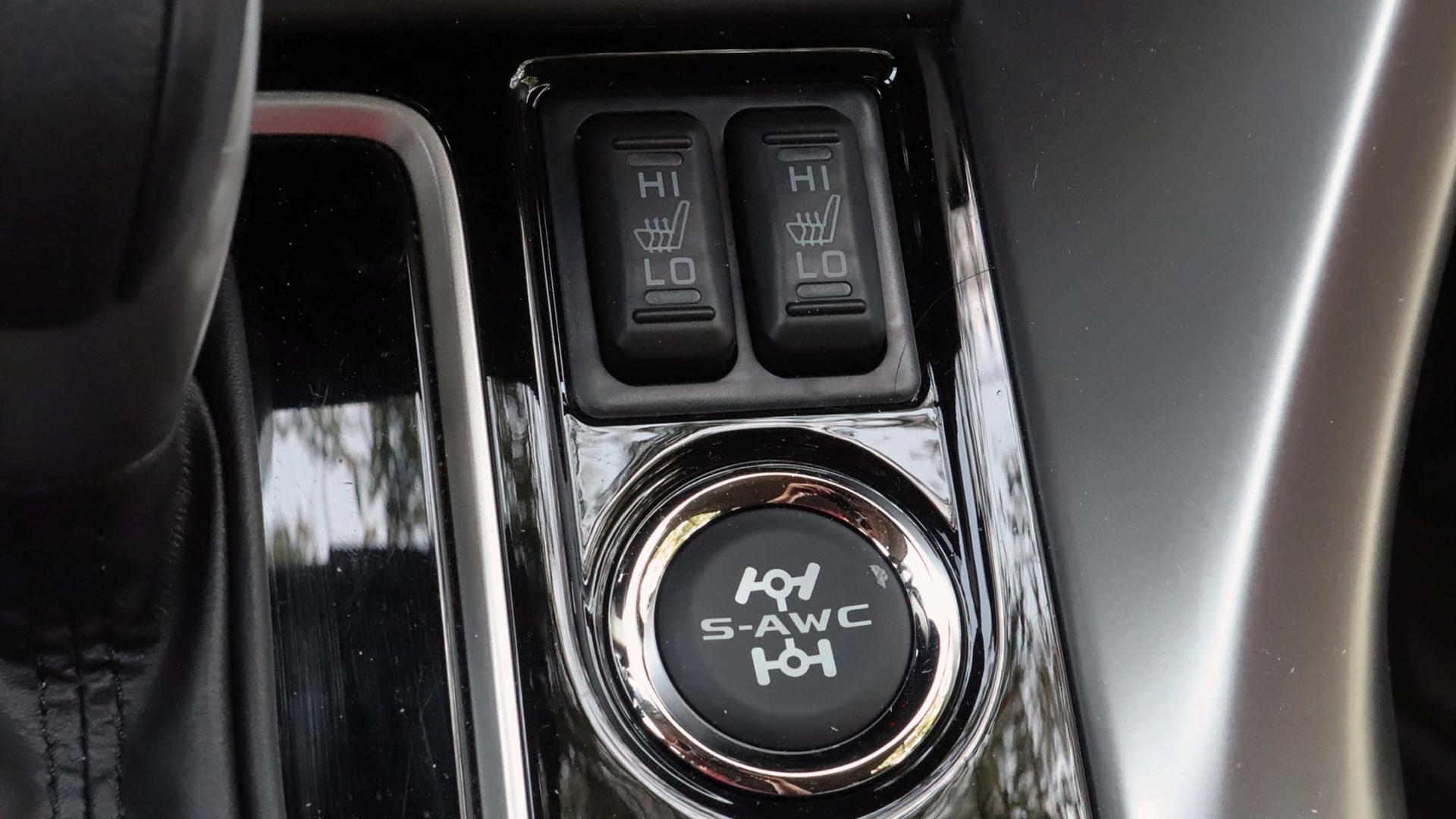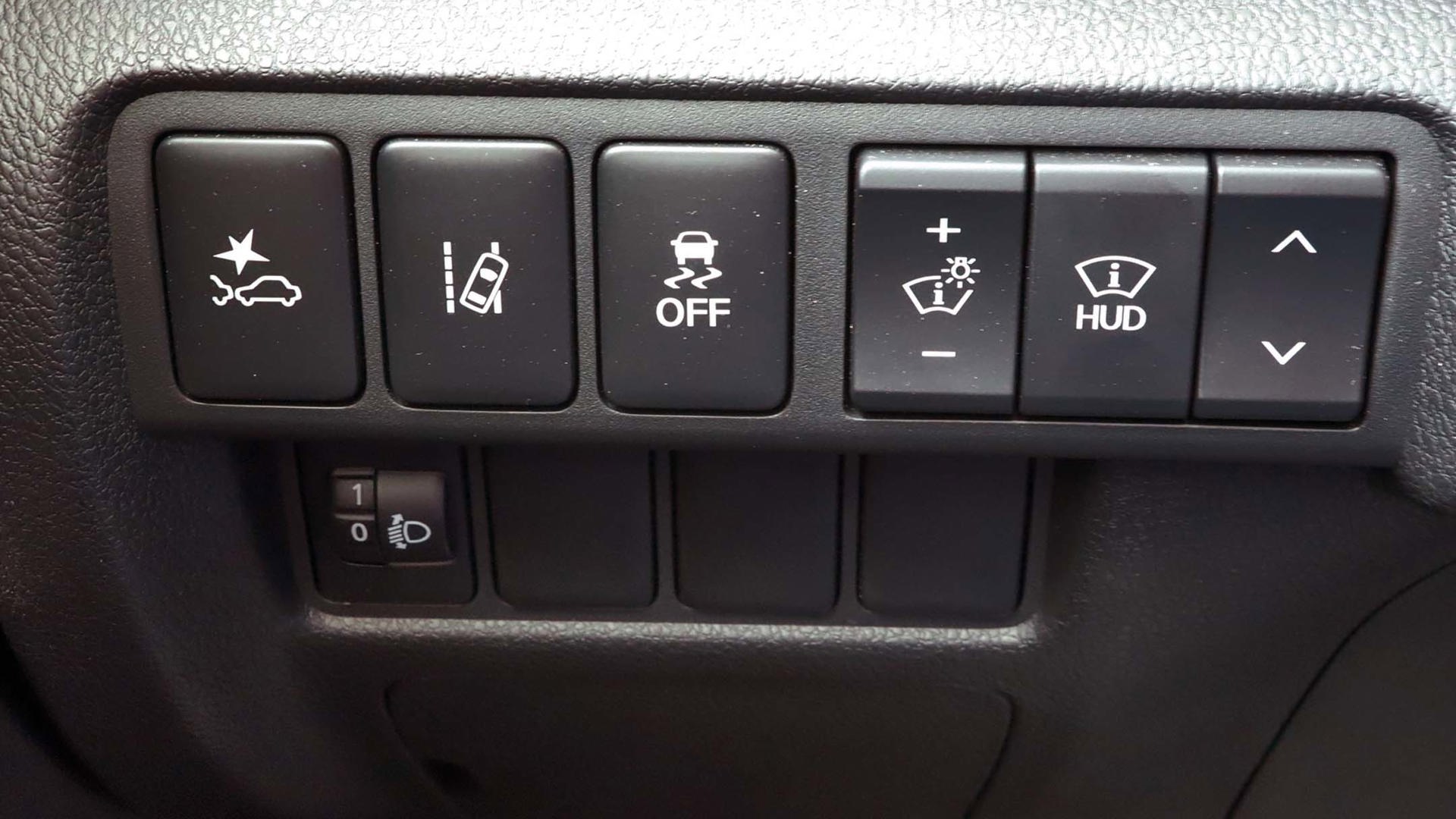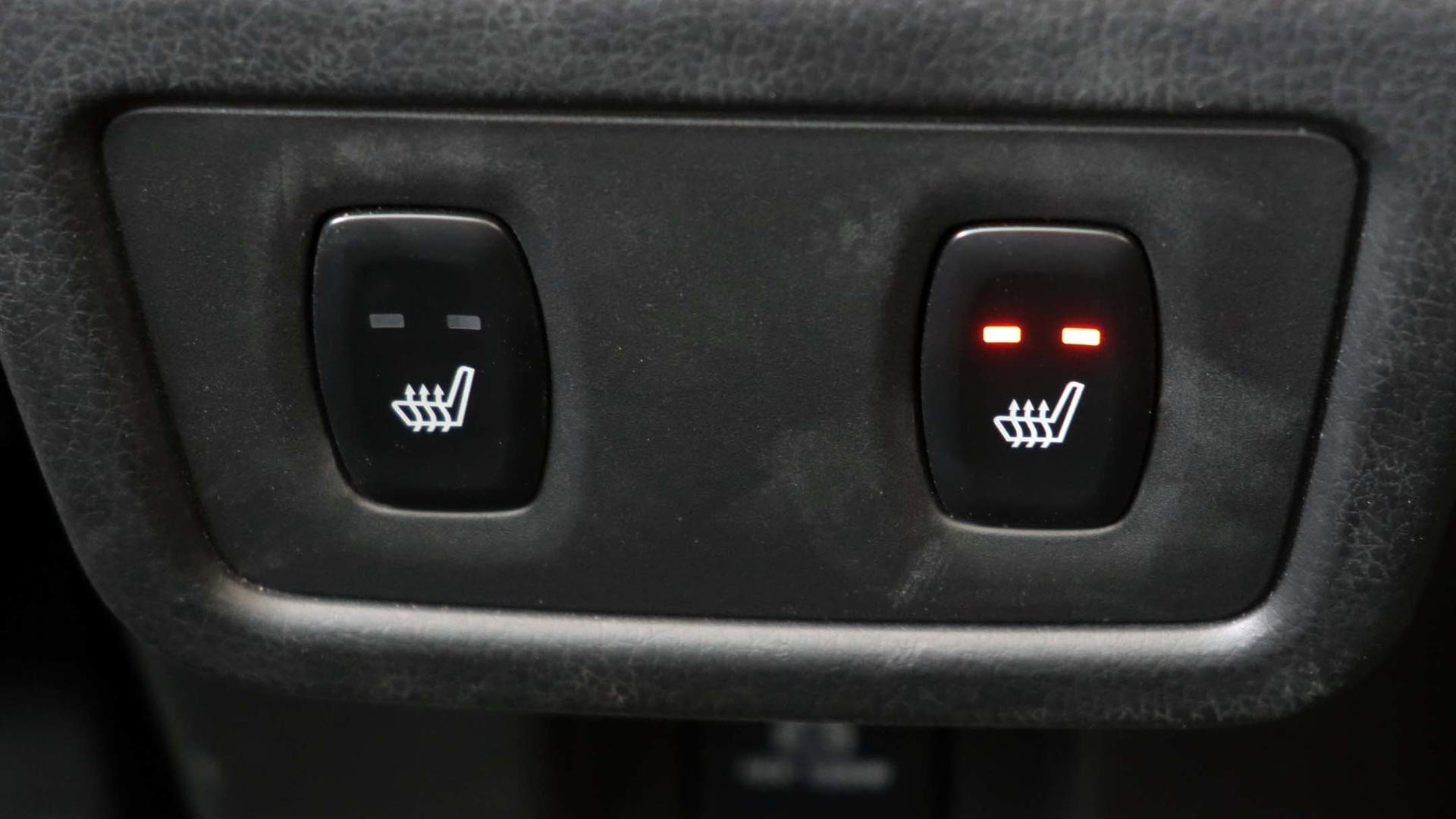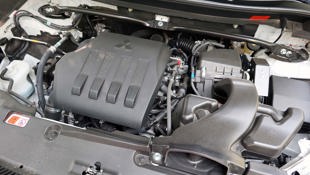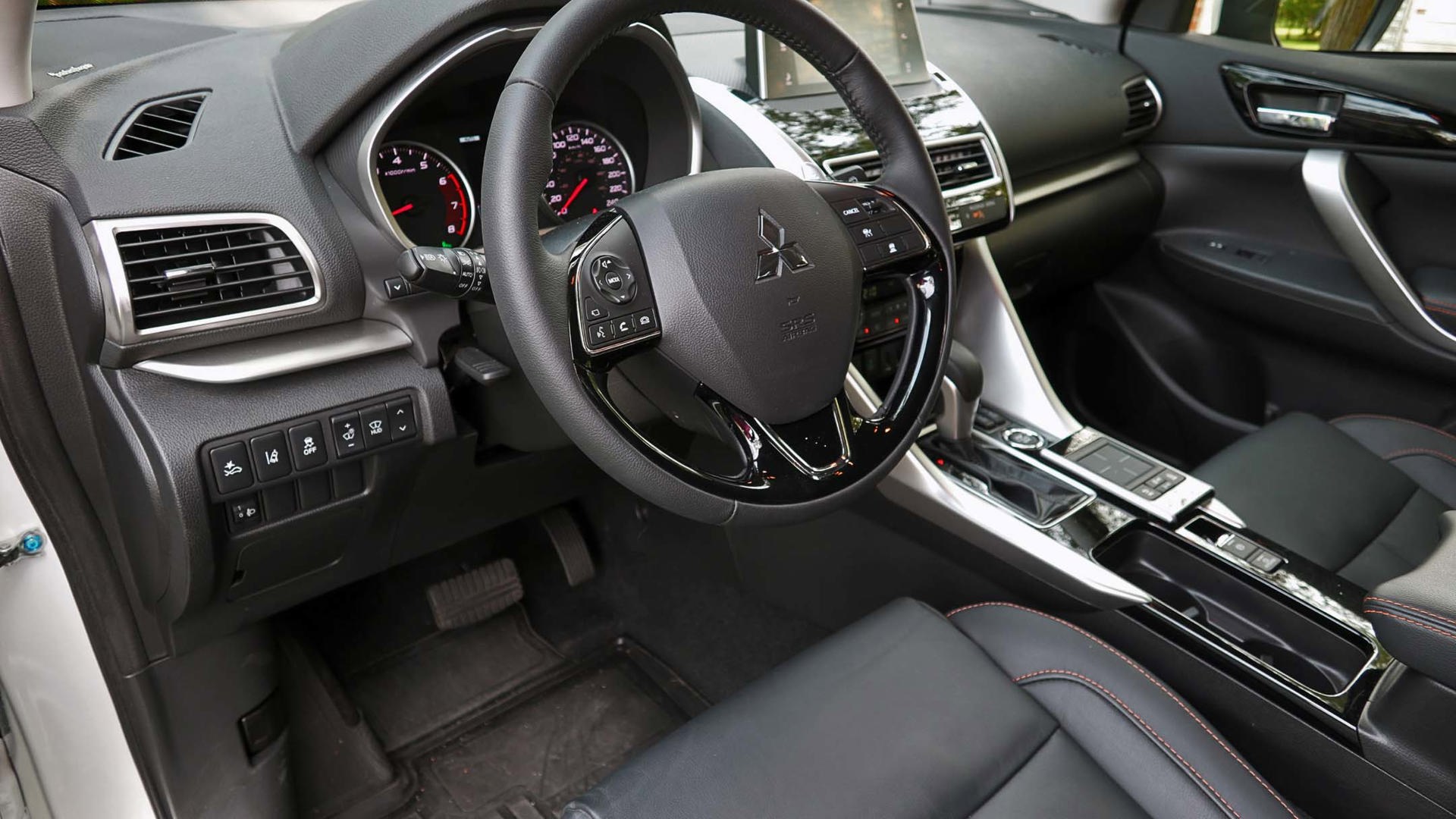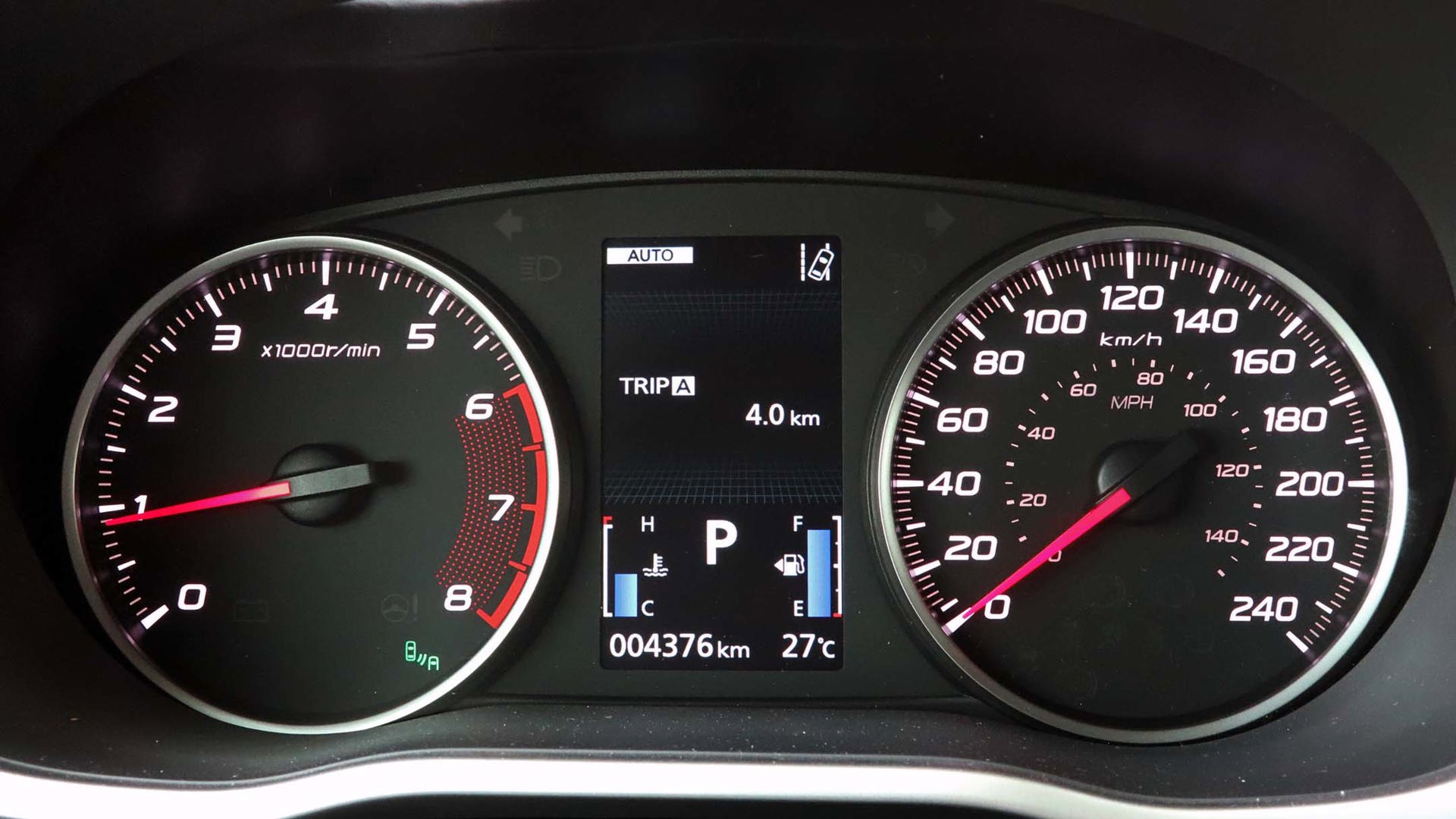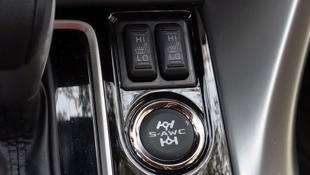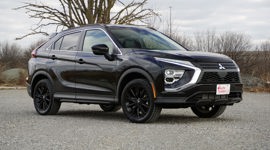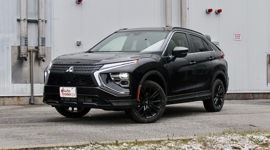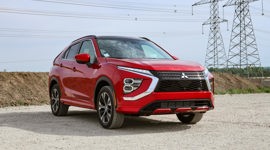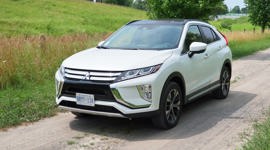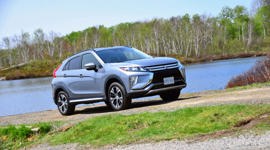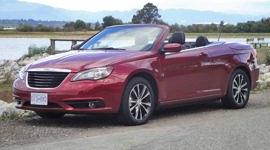 AutoTrader SCORE
AutoTrader SCORE
-
STYLING6/10
-
Safety8/10
-
PRACTICALITY6/10
-
USER-FRIENDLINESS8/10
-
FEATURES8/10
-
POWER8/10
-
COMFORT8/10
-
DRIVING FEEL7/10
-
FUEL ECONOMY8/10
-
VALUE8/10
Mitsubishi has always been a bit of an outsider in the Canadian market. We first got to know it when its vehicles were rebadged for the Chrysler Corporation many decades ago, creating cars like the Plymouth Sapporo and Dodge Stealth. It came to Canada under its own name in 2002, but recently dropped all but one of its cars in favour of an almost-all-SUV lineup, including my tester, the 2019 Mitsubishi Eclipse Cross. There are five trim levels and my GT was the top of the heap, priced at $35,998.
Styling: 6/10
“Polarizing” is the perfect word for the Eclipse Cross’ looks, and I’m pretty much on the negative side of the term. Up front, everything starts out fine with the well-integrated headlamps and chrome bars, but then there’s that black hole of a grille (made worse with the sharp contrast to my vehicle’s $300 pearlescent white paint) and the cartoonishly oversized coves for the fog lamps. At the rear, a handsome arch over the rear wheels is mimicked by an unsightly bulge around the liftgate – and that panel is split into two panes, with a bar that cuts right across the scenery in your rear-view mirror.
There is some styling redemption by the interior designers, who gave the cabin a handsome, well-finished look, thanks to metallic accents that blend the dash with the centre console, and echo it with matching door pulls that are set far enough back to provide enough leverage when closing the door.
Safety: 8/10
The Eclipse Cross has been named a Top Safety Pick by the US Insurance Institute for Highway Safety (IIHS), but there’s a caveat: while all trim levels have the highest “Good” ratings for crash protection, only the top-trim GT has both the emergency front braking and the LED headlamps that put it over the edge into the Top Pick category.
The lower trim levels don’t share all of the GT’s higher-tech items. The base ES gets a back-up camera, but that’s mandatory on all new vehicles; a tire pressure monitoring system is also included. The next-level-up SE adds blind-spot monitoring, while the SE Tech Package slides in adaptive cruise control, emergency front braking, lane-departure warning, and automatic high-beam headlamps. The GT then adds a head-up display, the aforementioned LED lamps, and a multi-view camera.
Practicality: 6/10
With its sloping rear roofline, the Mitsubishi requires taller rear-seat occupants to be careful they don’t whack their noggins getting in, and there’s less headroom back there than in the front seats.
The rear-end styling gives it a narrower liftgate, and correspondingly pinched cargo access, than most competitor models that have wider hatches. The GT comes with a premium stereo and its subwoofer chews up some of the rear cargo space, too.
Up front, there’s an open cubby in the centre stack for small-item storage, as well as a covered cubby box, but that’s about it, since the infotainment’s touchpad and the drive mode selector occupy a considerable chunk of the console.
User Friendliness: 8/10
I have two words for you, Mitsubishi: volume dial. Yes, I can adjust the stereo squawk from the steering wheel, or by tapping the glass on the screen, but nothing – nothing – is better than simply reaching over and giving a dial a quick spin. Honda learned the error of its ways and reinstalled one, and you can, too.
I’m also no fan of the touchpad on the console, apparently put there for ergonomic reasons if you don’t want to reach forward to operate the infotainment system with its touchscreen. Perhaps it’s a personal thing, but I find there’s a disconnect when swiping the pad to see what’s happening on the screen, versus just tapping the glass directly.
The volume and touchpad aside, the Eclipse Cross’ controls are very straightforward, always a plus in my book. There are buttons and dials for the climate control, the heated seats, and drive modes (although the switches to adjust the mirror are a bit awkward, as they’re perched atop the door pull).
The GT includes a head-up display, and Mitsubishi gets some redemption by including toggle switches to instantly raise or lower the height and brightness of the display. Far too many automakers require you to access these head-up adjustments by digging through multiple pages on the centre screen.
Features: 8/10
Mitsubishi tends to be generous with its features list, and the Eclipse Cross carries through on that. American buyers can get a base model with front-wheel drive, but all Canadian trims have all-wheel drive.
The base model, which starts at $27,998, includes 18-inch alloy wheels, fog lamps, heated mirrors, heated front seats, automatic climate control, 7-inch infotainment system, driver’s knee airbag, tire pressure monitoring system, anti-theft alarm, and satellite radio. In addition to Bluetooth, all models include Android Auto and Apple CarPlay – and you’ll want that to hook up your phone, because navigation isn’t available on any trim. The Eclipse Cross was introduced for 2018 and so there aren’t many changes for 2019, but one is the addition of roof rail mounting points on the lowest trim levels, so that all models can be equipped with rails and crossbars, available from the dealer.
Moving up the trim list adds such items as an electric parking brake, cargo cover, rain-sensing wipers, power-folding mirrors, wheel-mounted paddle shifters, proximity key, dual-zone climate control, and auto-dimming rear-view mirror. Unique to the top-line GT are a power panoramic sunroof, LED headlamps, heated steering wheel, heated rear seats, power driver’s seat, leather upholstery, multi-view camera, and Rockford Fosgate premium stereo. It also includes a head-up display, a clear plastic screen that lifts up from above the instrument cluster. It’s not as good as those that project onto the windshield directly in your line of vision – you have to keep refocusing on this one, because it’s closer to you – but you don’t have to look down as far as the cluster to check your speed and other info.
Power: 8/10
One’s satisfaction with what’s under the hood depends on how you plan to drive it. At 152 horsepower and 184 lb-ft of torque, the Eclipse Cross’ turbocharged 1.5L four-cylinder engine accelerates smoothly and confidently. But it runs out of steam when it’s asked for more muscular stuff, such as charging up steeper hills. Plan ahead when you want to get around someone on the highway; under full throttle, the engine doesn’t roar or whine as many in this segment do, but it also doesn’t deliver any blistering passing power.
The transmission is a CVT and it’s a good one; it bumps up and down the range like a conventional unit, and under most driving conditions it’s easy to forget that it doesn’t have gears inside it. You can also “shift” it sequentially up or down its pre-set points, using the wheel-mounted paddles or the console-mounted shifter. Overall, for everyday driving and highway cruising, this engine–transmission combo is pretty impressive.
Comfort: 8/10
The Eclipse Cross is a fairly comfy little beast, at least for those in the front. The seats have a good amount of bolstering to them, and they’re supportive for longer trips. The front footwells are relatively wide and deep for a vehicle of this size, too. The driving position is good, although you’ll find it’s more of a lower-slung chair in the style of a crossover, rather than the taller perch of many sport-utilities.
As usually happens in many mainstream models, rear-seat passengers don’t get quite the same level of attention: headroom may be tighter for tall people, and the seats are flatter. The trade-off is reclining seats that slide fore and aft to provide decent legroom and knee space, along with room for the longest-legged to slip their feet under the front chairs for even more space.
Driving Feel: 7/10
The Eclipse name has a long history on sporty, low-slung cars at Mitsubishi, but park any comparison to those at the door. The Eclipse Cross is about getting the family from A to B, and that’s how it’s tuned. The steering is very light: definitely not what you want in a canyon-carver, but perfect for spinning this little beast through traffic and tight parking spots. The suspension provides a soft, smooth ride, but at the expense of some body roll on curves. Don’t pretend to be a race driver on tight highway off-ramps, and you and this vehicle will get along just fine.
Mitsubishi calls its all-wheel system S-AWC, for Super All-Wheel Control, and it’s actually a pretty slick system. Rather than just move torque to the rear wheels when needed, as many systems do in this segment, S-AWC monitors speed, steering, and yaw rate, and uses the brakes to further adjust torque between the left and right wheels. Along with a “normal” driving mode, there are also settings for gravel and snow. Using the gravel setting, I took the Eclipse Cross over a rural road that had recently received a fresh coat of stone, and was very impressed with how straight it tracked over it, even at higher speeds.
Fuel Economy: 8/10
The Eclipse Cross is officially rated at 9.6 L/100 km in the city; 8.9 on the highway; and 9.3 in combined city/highway driving. That puts it toward the upper range among vehicles in the segment, but it’s still well within what I’d expect for something this size, and with all-wheel drive. And in my week with it, I hit the published rate of 9.3 L/100 km on the nose.
Value: 8/10
Lots of stuff for not a lot of money is key here, and the Eclipse Cross delivers. Its base ES is $27,998, while my GT tops out the lineup at $35,998. Perhaps the bargain of the group is the SE Tech Package, which includes all the higher-tech safety features, and while it lacks GT items such as the panoramic sunroof, premium stereo, and leather seats, its sticker is $31,998.
Several automakers offer some pretty impressive warranties, but Mitsubishi claims it has the best of all. You get bumper-to-bumper coverage for five years or 100,000 km; roadside assistance for five years with no mileage limit; and powertrain coverage for 10 years or 160,000 km. That’s a benefit for those who aren’t comfortable when their vehicles are out of warranty, and especially when many people choose long-term financing to get a lower monthly rate, and can still owe substantial amounts when the warranty expires. About the only downside, for those who trade their vehicles regularly, is that Mitsubishi models usually don’t command the higher retained value enjoyed by brands like Toyota or Honda.
Conclusion
So what’s the verdict? Just as with its styling, the Mitsubishi Eclipse Cross’ personality tends to go to one side or the other, rather than ride the middle of the road. Its engine is smooth, but its handling could be sharper; its interior is comfortable, but its cargo versatility has some rough points; and its controls are simple – except for some annoying exceptions. Still, when you’re cross-shopping the big names, its overall performance, its value, and its warranty should earn it some test-drive consideration.
| Engine Displacement | 1.5L |
|---|---|
| Engine Cylinders | I4 |
| Peak Horsepower | 152 hp @ 5,500 rpm |
| Peak Torque | 184 lb-ft @ 2,000 rpm |
| Fuel Economy | 9.6/8.9/9.3 L/100 km cty/hwy/cmb |
| Cargo Space | 640 /1,385 L seats down |
| Model Tested | 2019 Mitsubishi Eclipse Cross GT S-AWC |
| Base Price | $35,998 |
| A/C Tax | $100 |
| Destination Fee | $1,575 |
| Price as Tested | $37,973 |
|
Optional Equipment
$300 – Pearlescent paint $300
|
|
